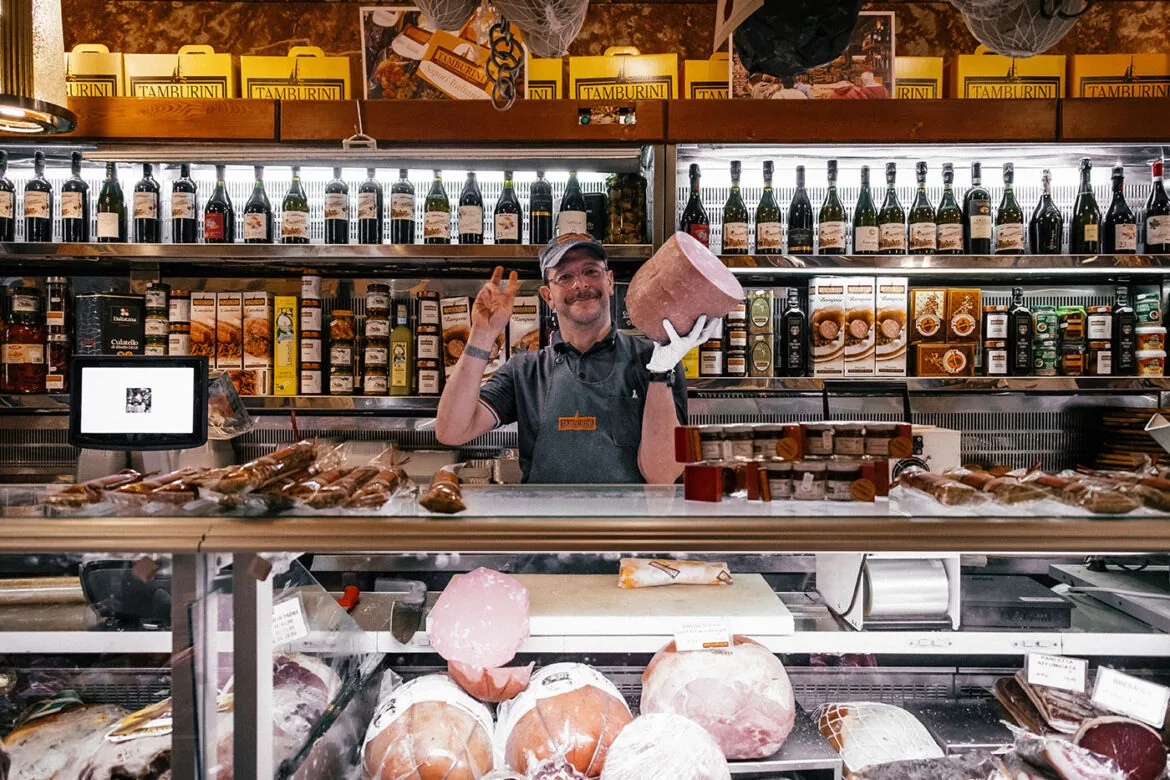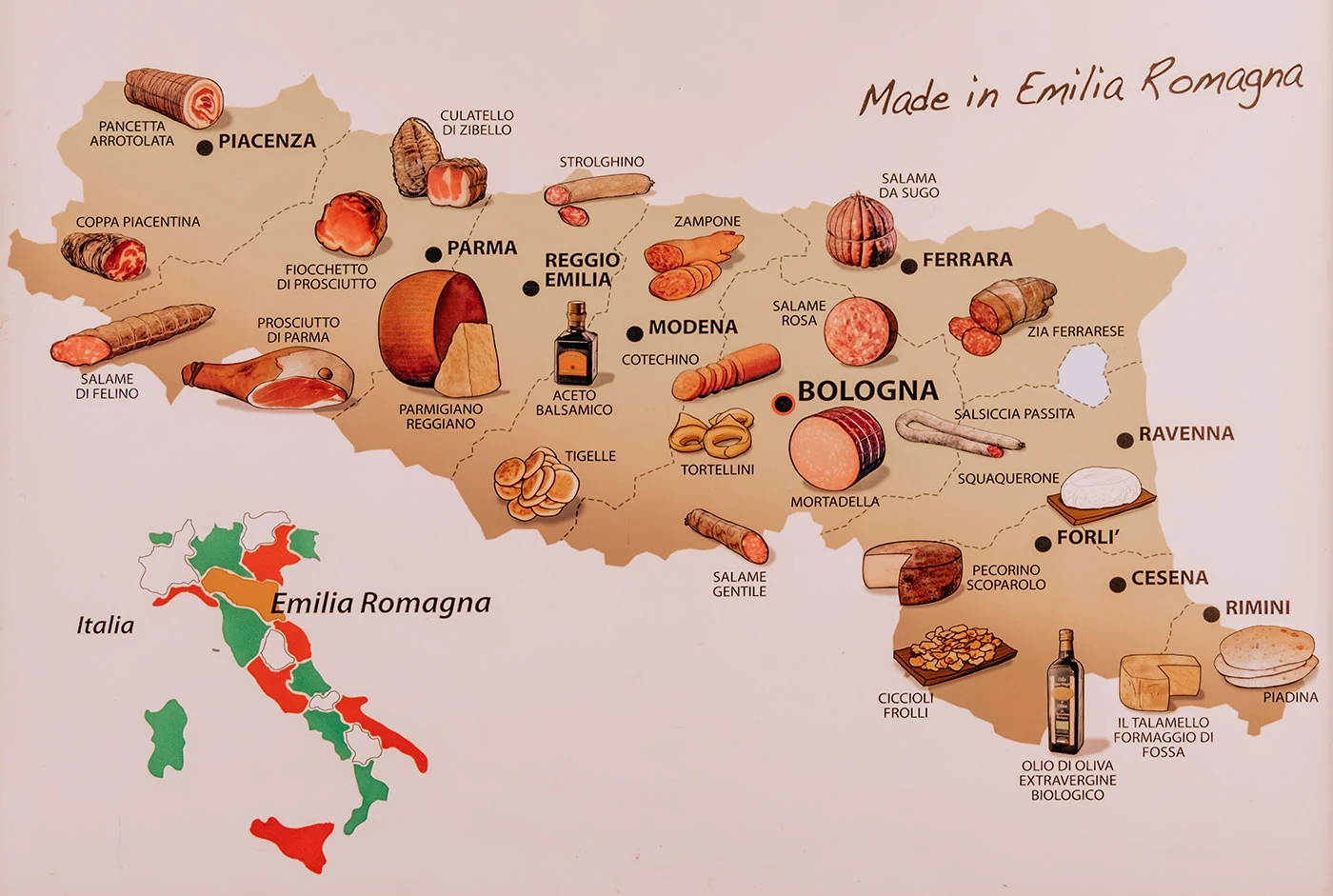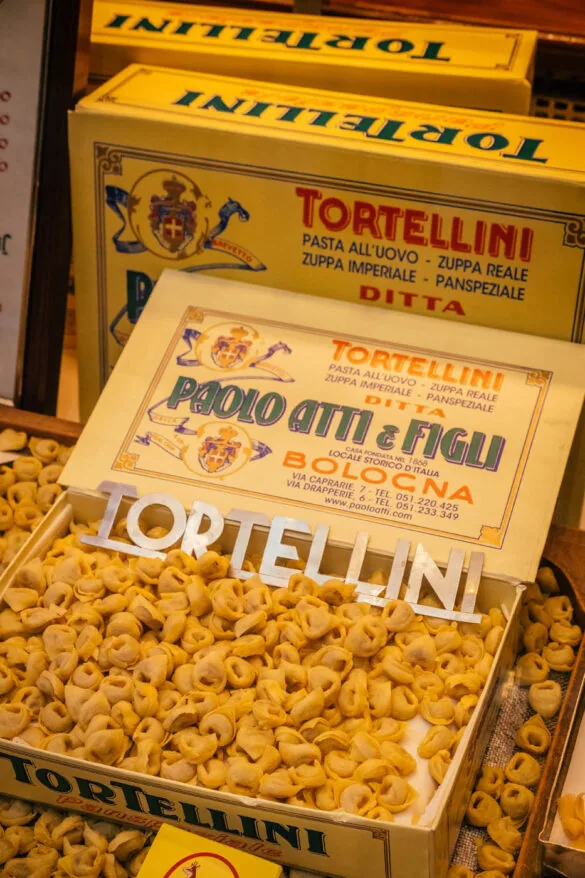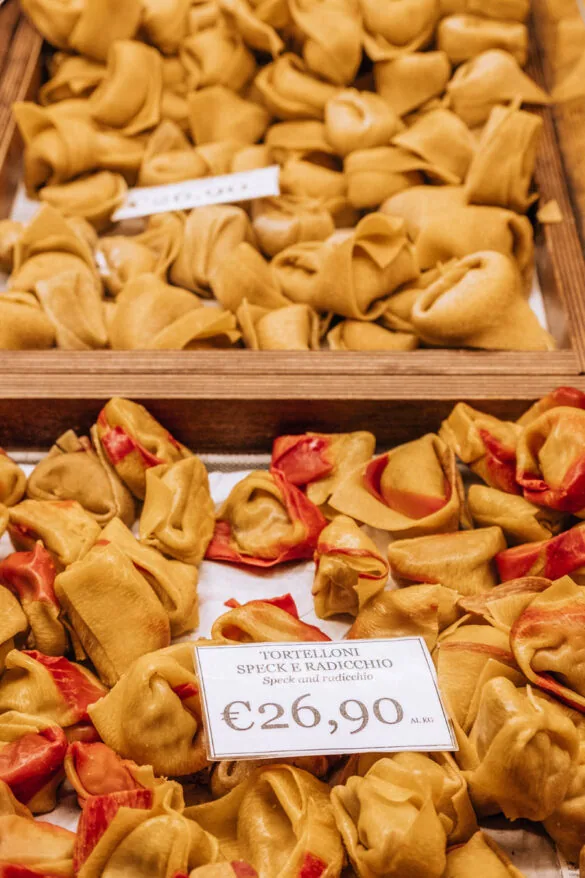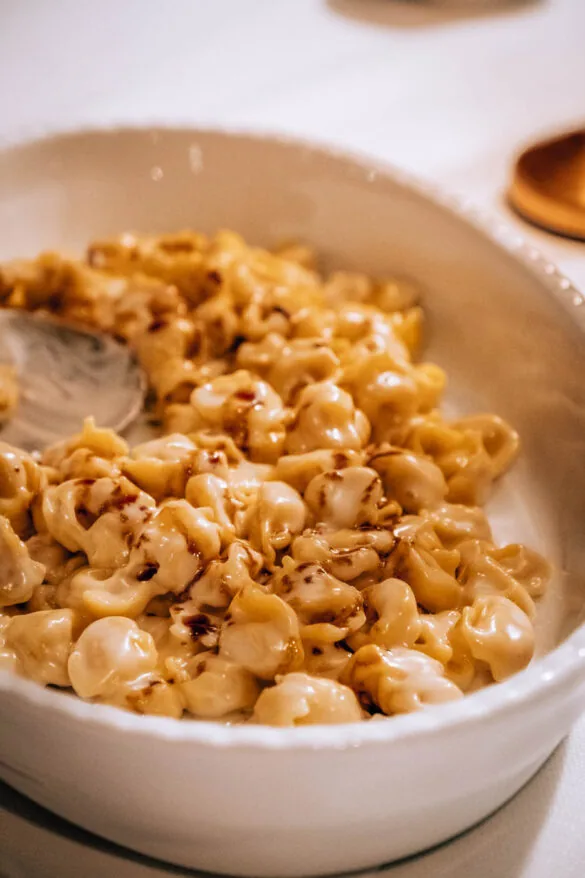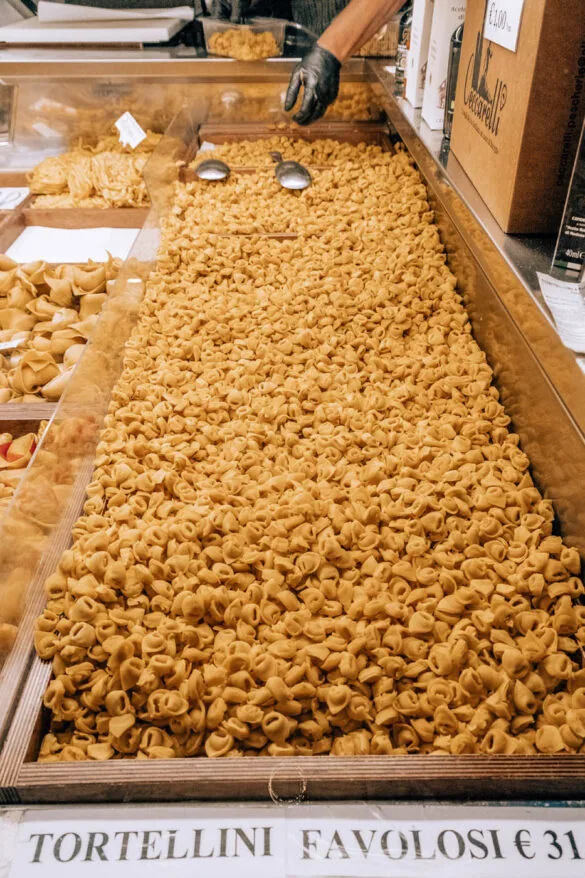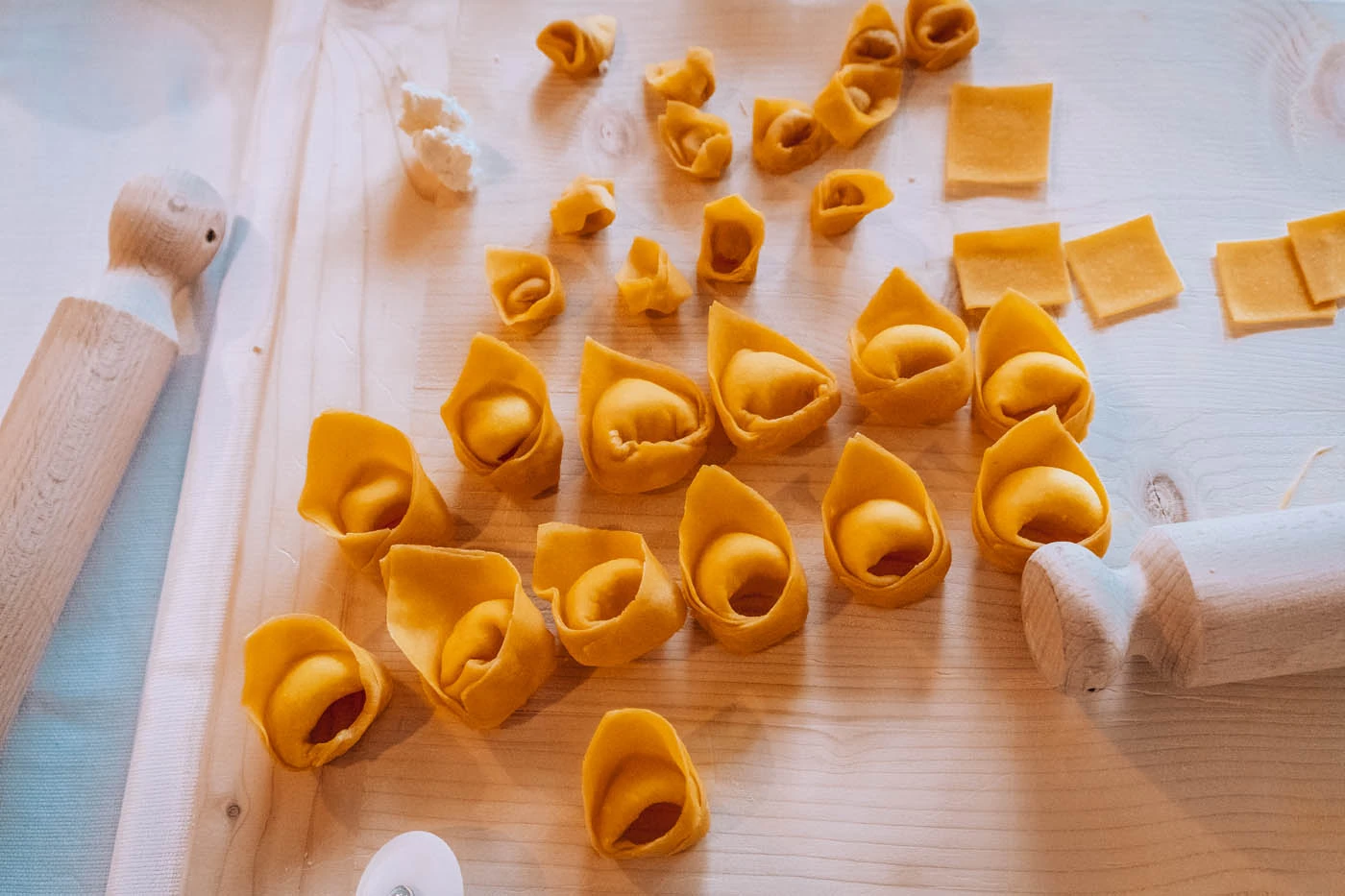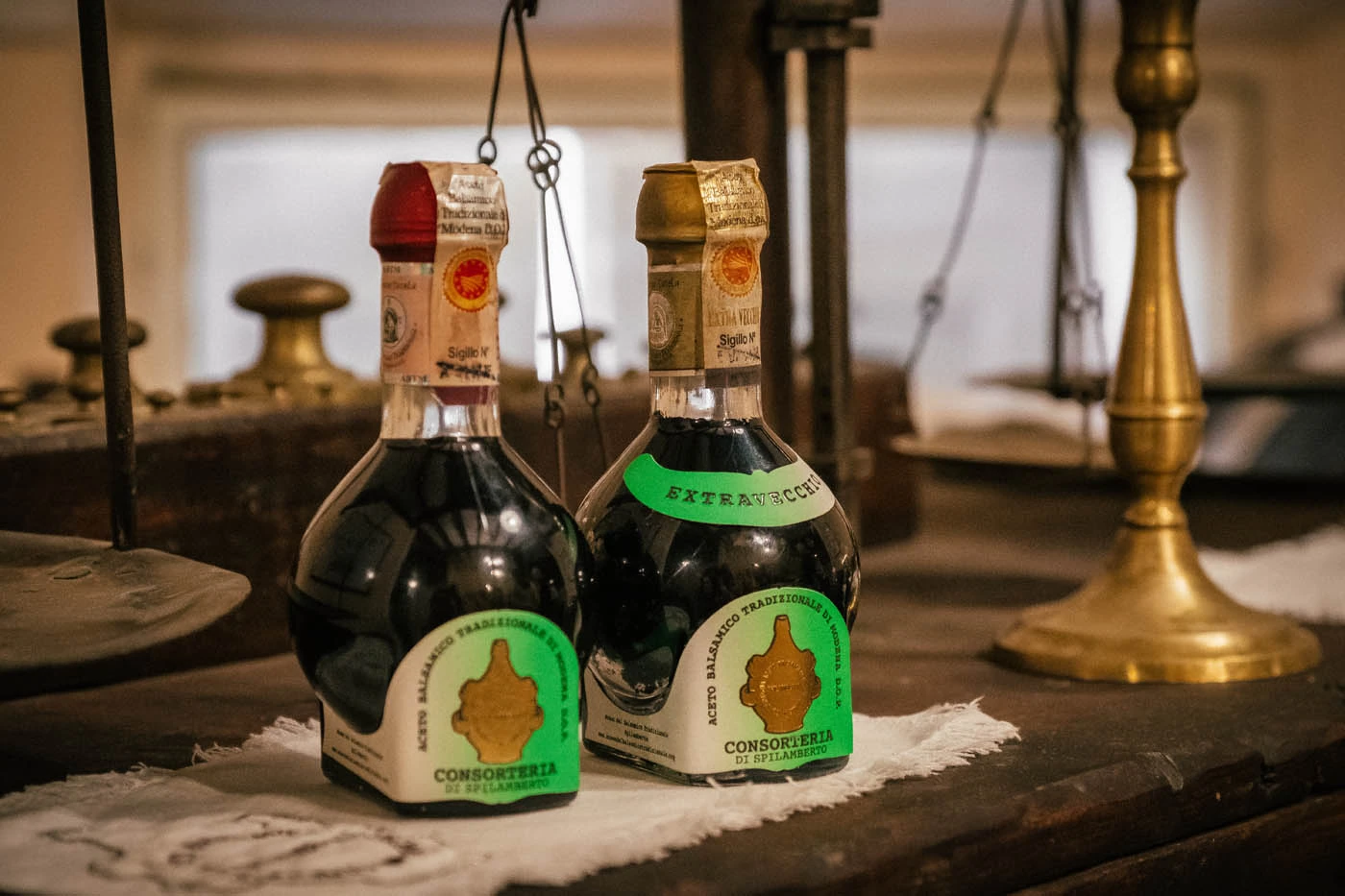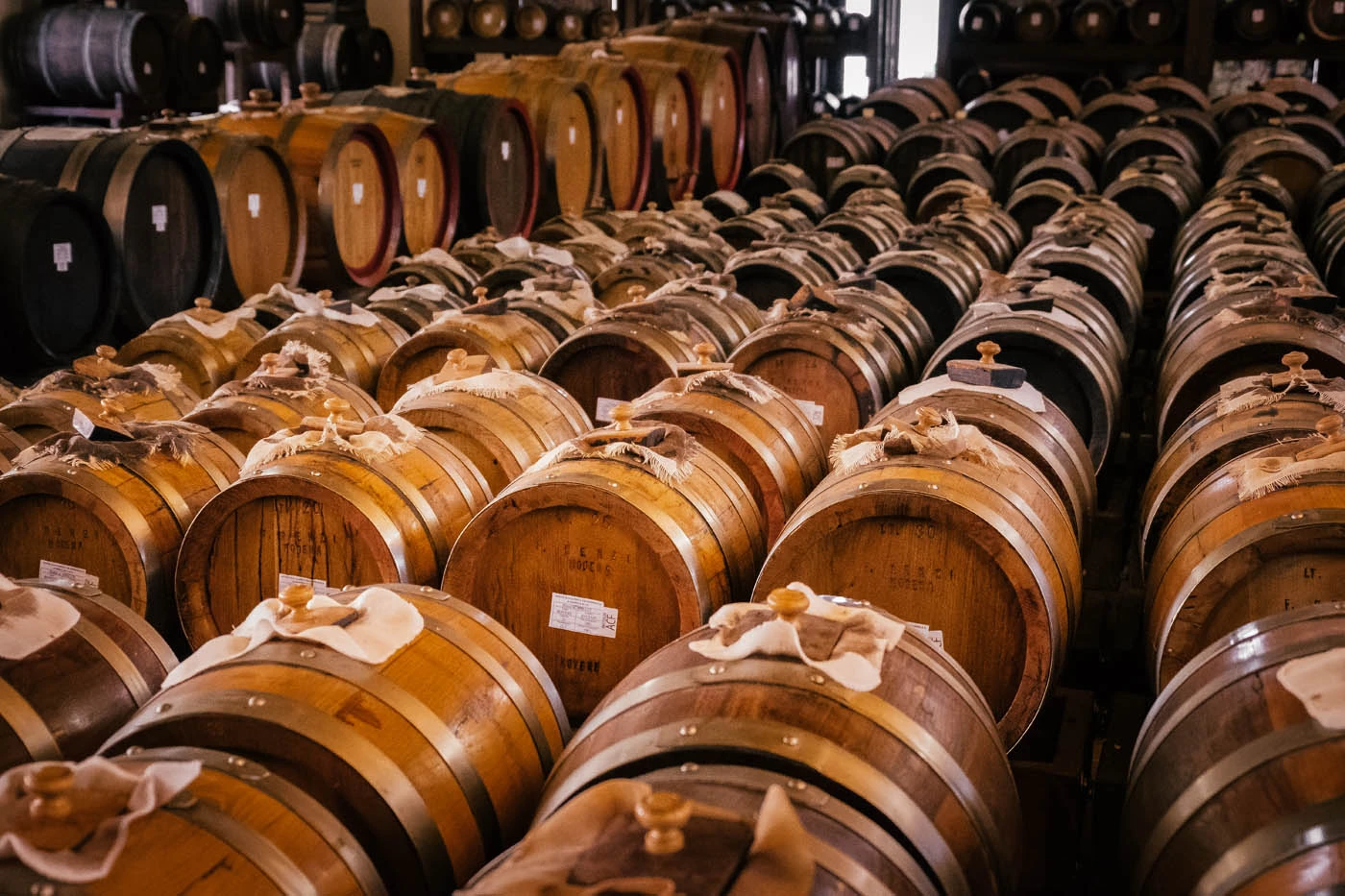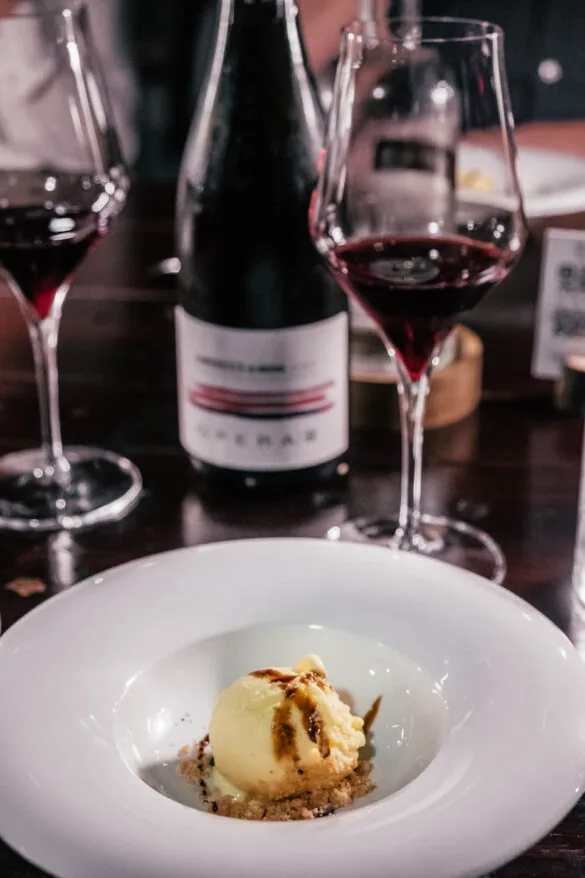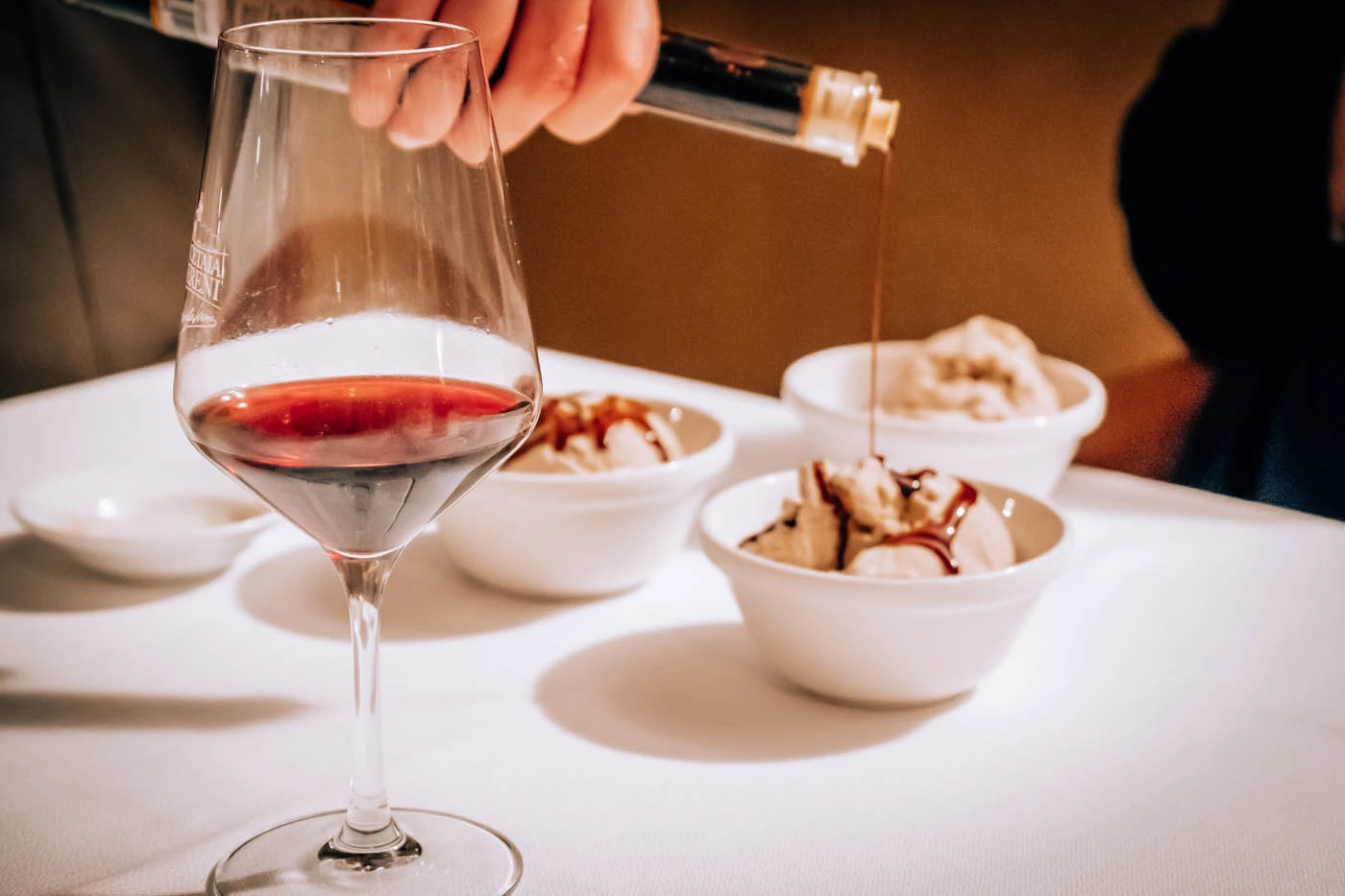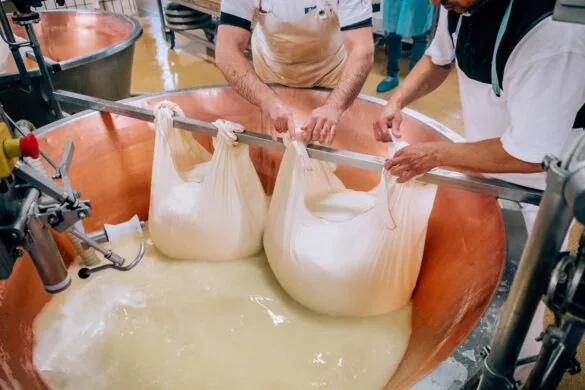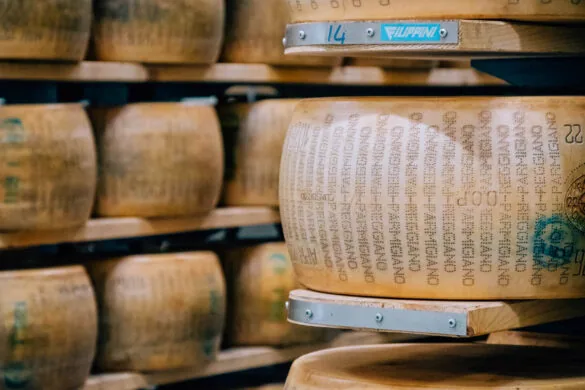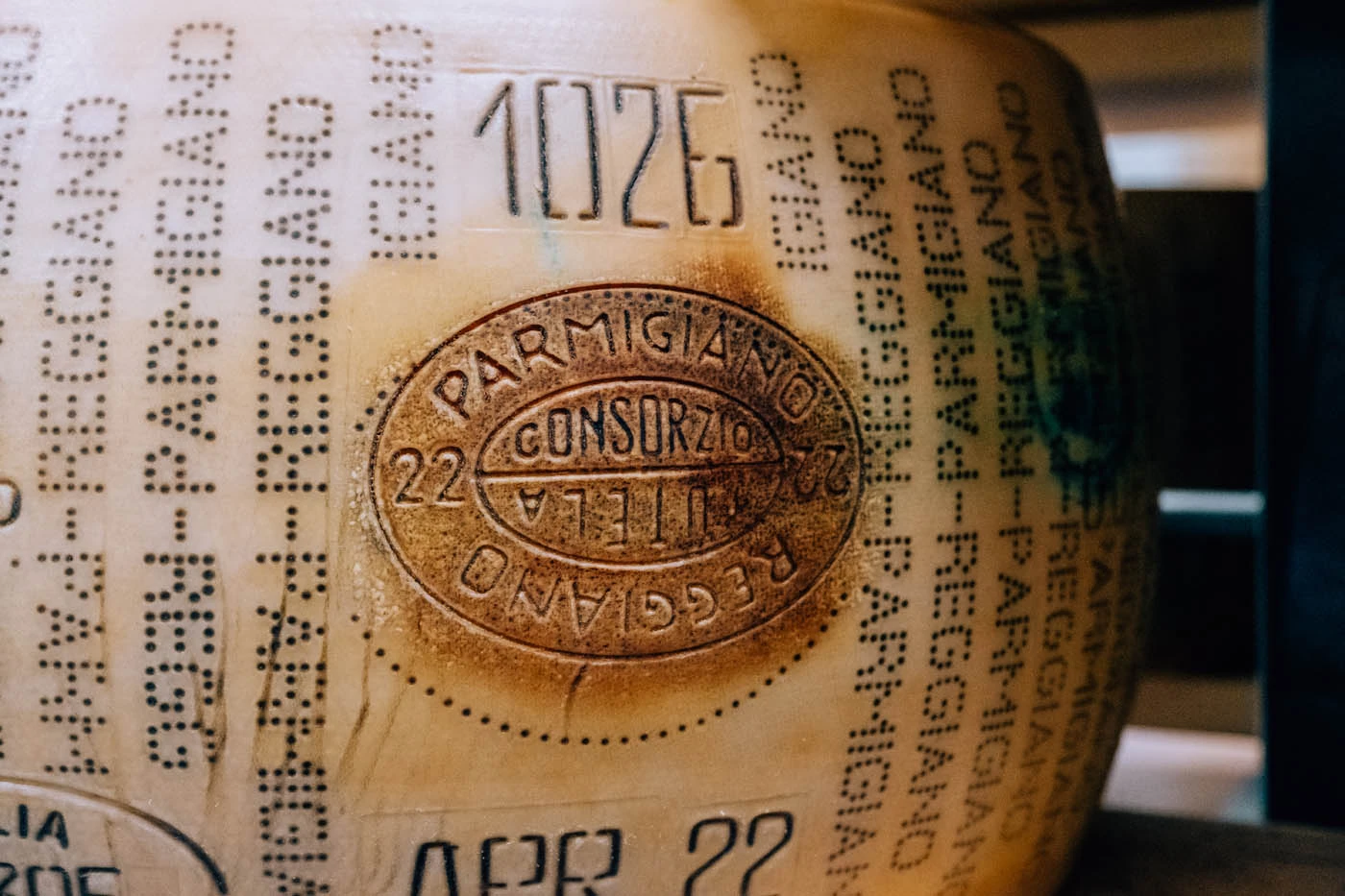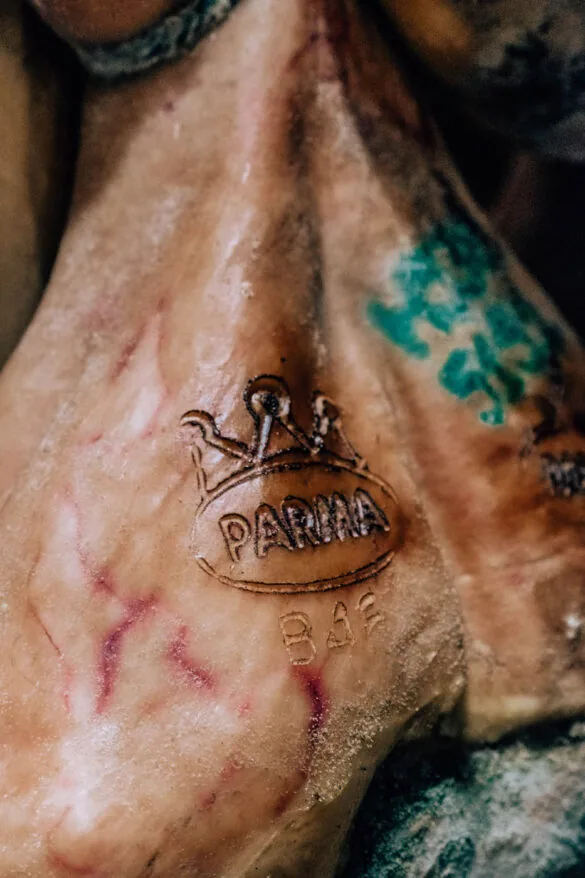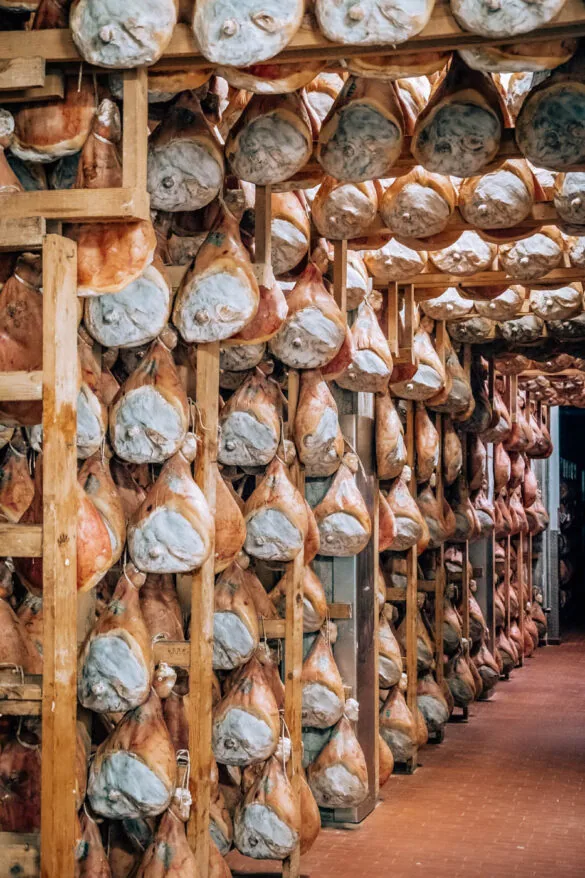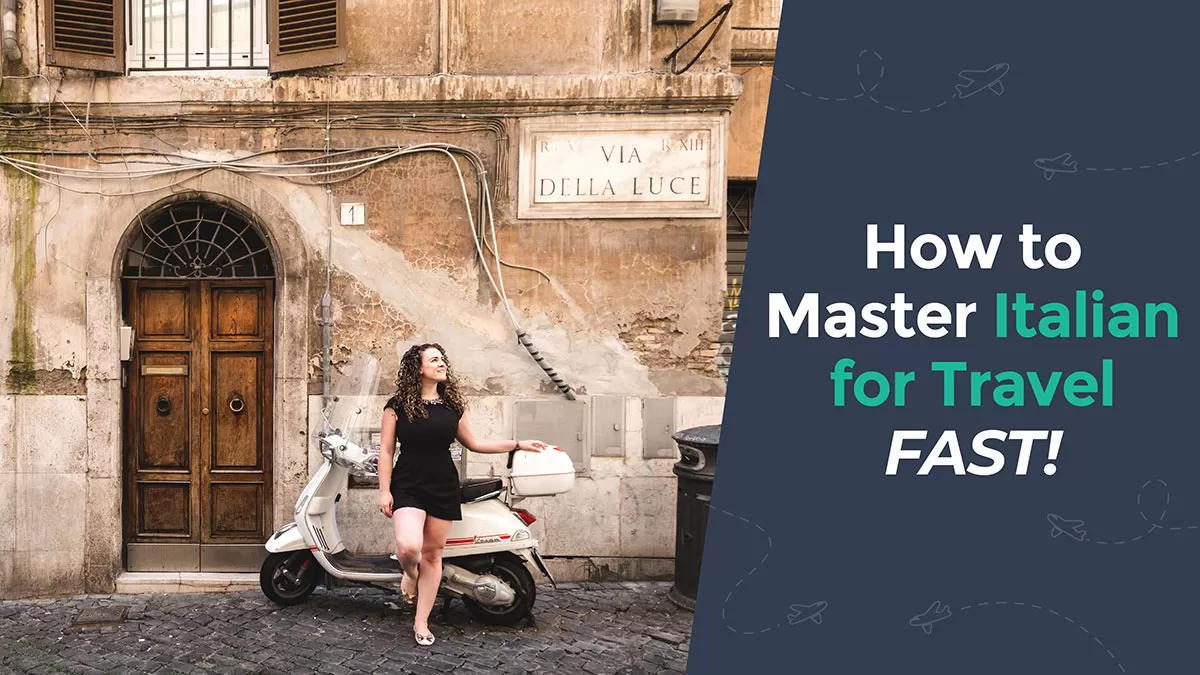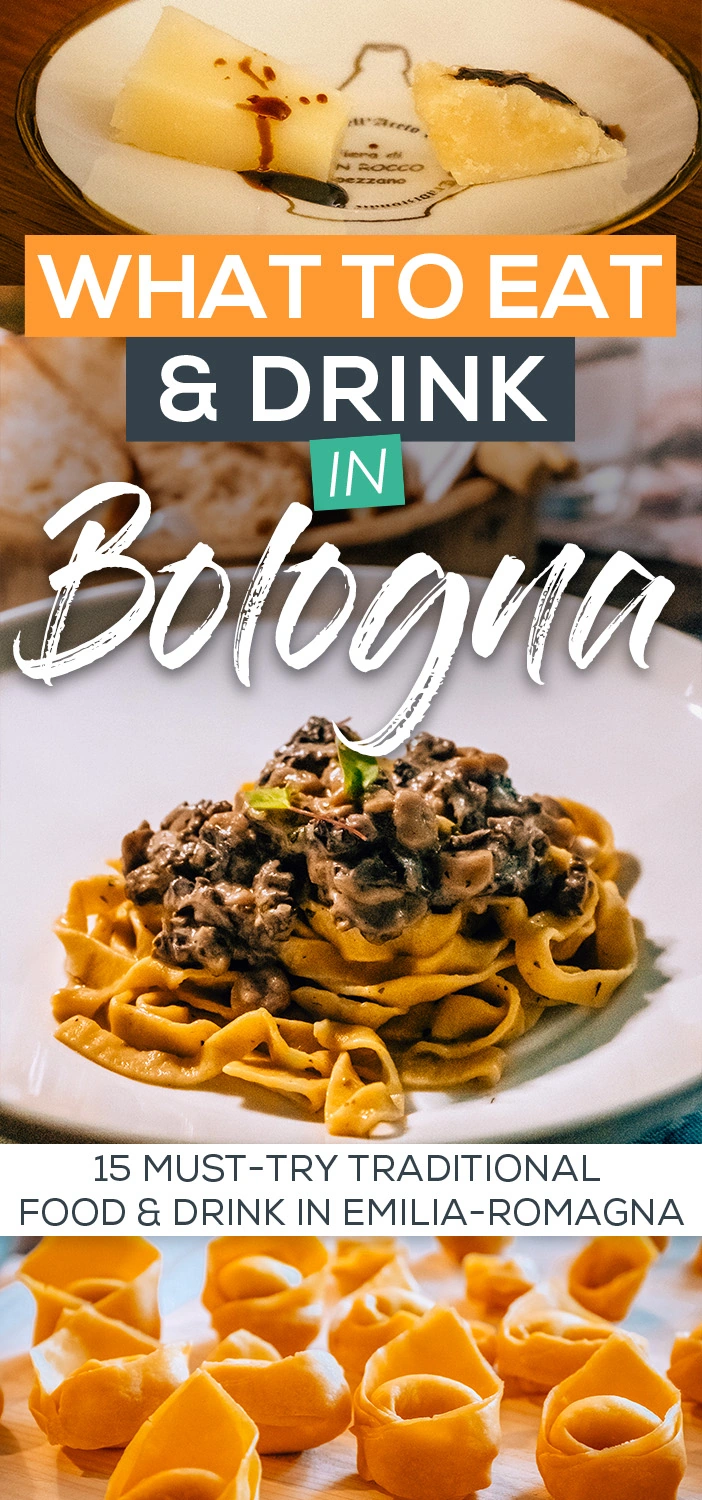If you’re a foodie, Bologna should definitely be on your list of must-visit destinations! The capital of the Emilia-Romagna region is an absolute delight for anyone who loves good food, with a variety of succulent dishes that earned it the nickname “La Grassa” (The Fat).
Wandering around trying all the best foods is definitely one of the most fun things to do in Bologna. From homemade pasta to mouth-watering cured meats, food is taken seriously around here. Many recipes are even registered at the local Chamber of Commerce to preserve their authenticity.
So, here’s a guide to what to eat in Bologna to satisfy your taste buds and make the most of your experience. At the end of the guide, you will also find a list of 5 must-try restaurants in Bologna, make sure to check that section out as well!
Top travel tip: I spent 5 days traveling around Emilia-Romagna on this fantastic food tour with a local guide where not only did we eat and drink traditional culinary delights, but also got special access and private tastings not otherwise available to the public. Spots are limited, be sure to check availability and book your tour here. For more details on what to expect, here’s my experience on this Beyond Bologna food tour.
What to Eat in Bologna and Emilia Romagna
With the vibrant medieval cityscape as a backdrop, let’s embark on a delectable journey to discover the most iconic Bolognese dishes you must sample during your visit!
Don’t miss my guide on what to eat in Emilia Romagna
Need help ordering? Learn how to order food and drinks in Italian or watch my video.
Tortellini
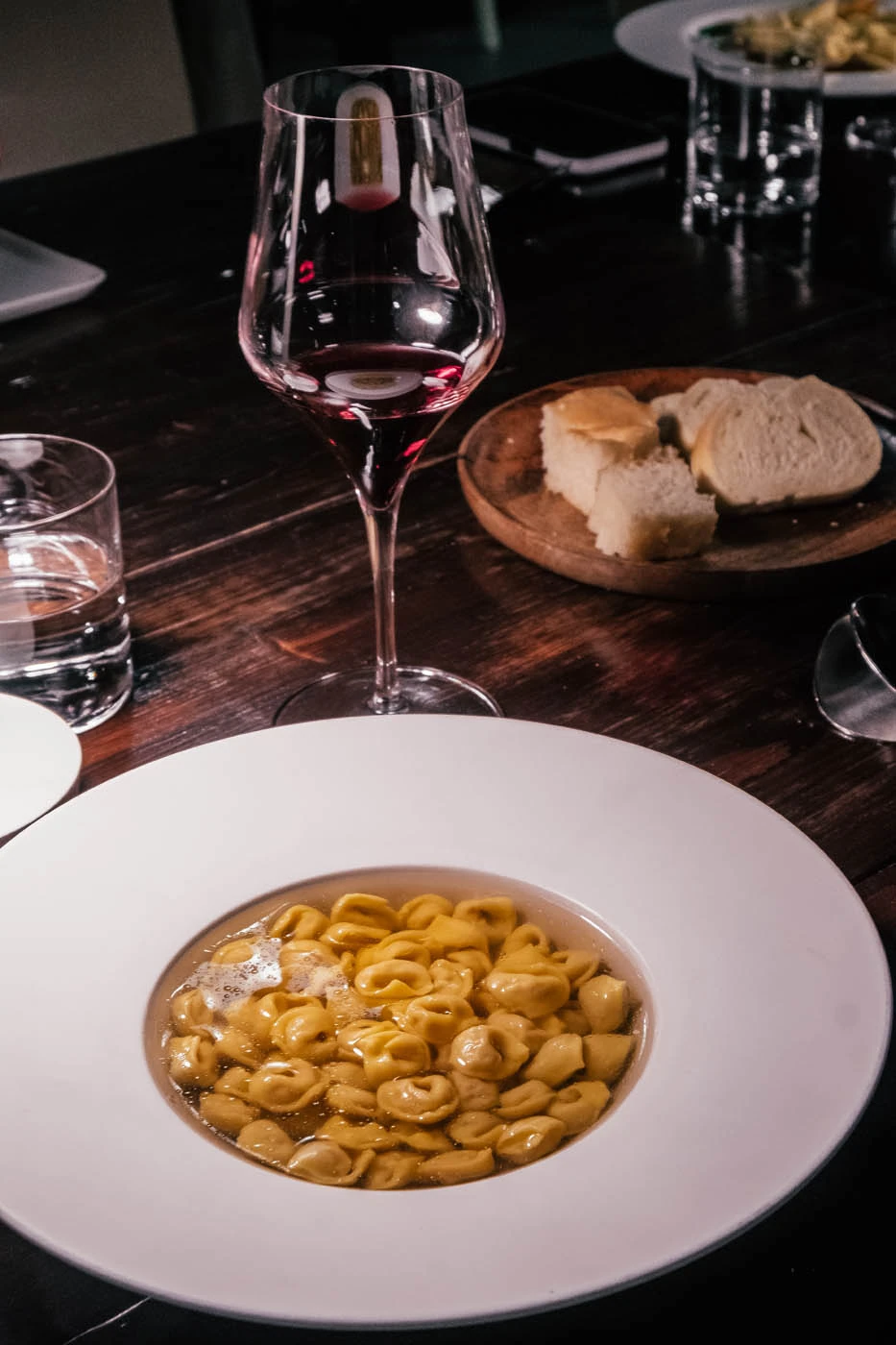
Tortellini in Brodo
Tortellini in Bologna isn’t just some ordinary stuffed pasta dish, it’s a true local icon. They are shaped like cute little belly buttons and are said to have been inspired by none other than Venus, the goddess of love – talk about romantic pasta vibes! Despite the uncertainty over their origin, the oldest known tortellini recipe dates all the way back to the 14th century and is kept safe in a cookbook preserved at the university library of Bologna.
Tortellini are a handmade delicacy crafted by local ladies called sfogline. (from the word sfoglia, which means pasta dough). These skilled artisans have been passing down the art of making tortellini for generations, making it a true craft that can still be observed around town. The traditional way to eat tortellini in Bologna is in brodo (i.e. with a simple broth), but they can also be served with a delicate sauce.
Balanzoni

Their name pays homage to the legendary Bolognese Carnival character, Dr. Balanzone, a jolly yet unreliable doctor who hilariously mixed up his Italian and Latin words – much like the combination of flavors in this dish!
Initially made for carnival season, the delicious balanzoni have become a year-round delicacy. They are also known as “crazy tortelli” because they were originally created to use up leftover filling from their more famous cousin, the tortellini. The classic condiment for balanzoni is butter and sage and some crunchy speck.
Tagliatelle al ragù
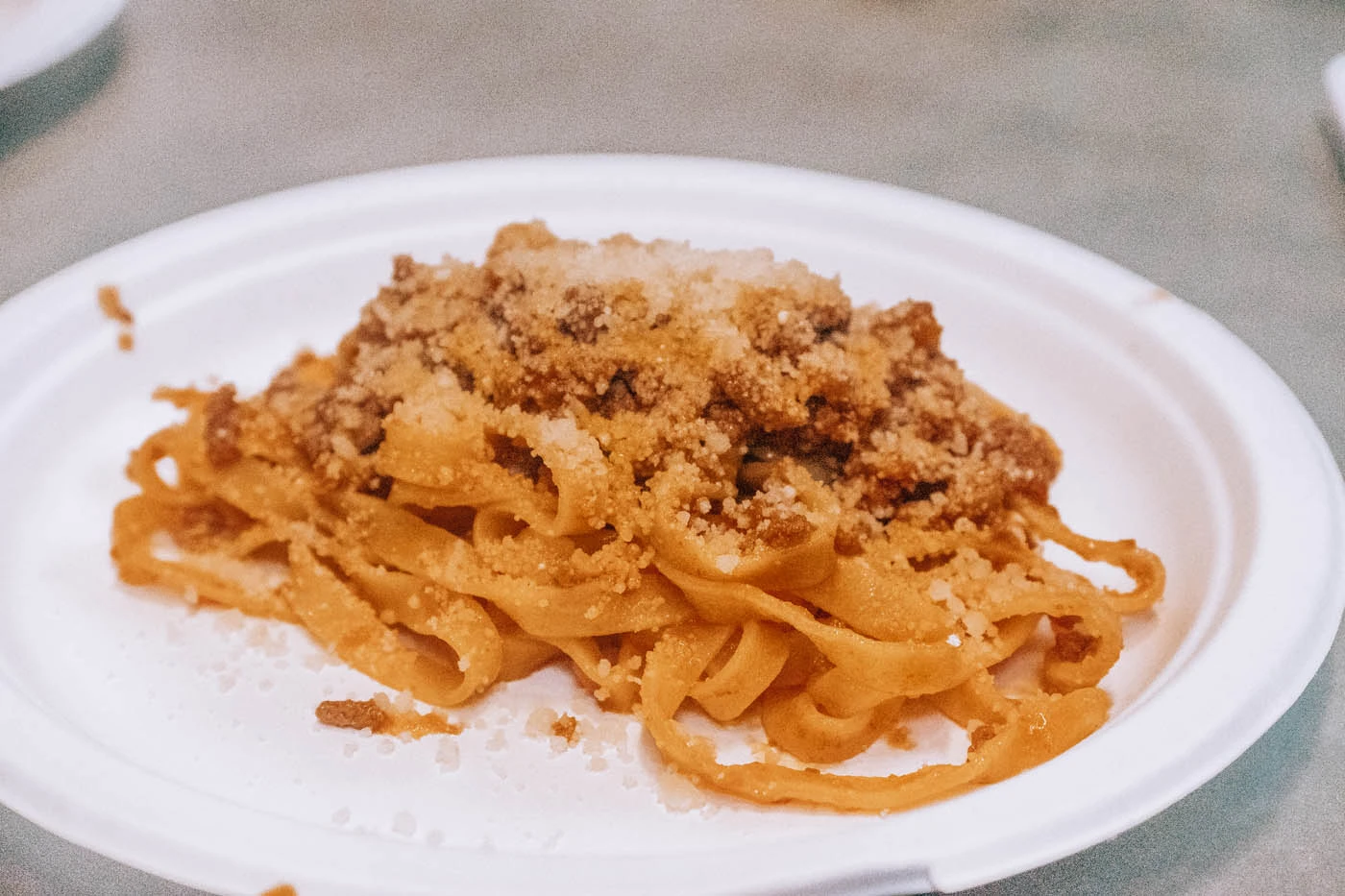
Tagliatelle’s true magic is revealed when paired with Bologna’s signature ragù sauce, whose recipe has been preserved at the Bologna Chamber of Commerce since 1982. This heavenly mixture of slow-cooked, velvety meat sauce, fragrant vegetables, white wine, and a touch of milk harmonizes with the pasta’s al dente texture. This classic Italian dish is a symphony of flavors, evoking the warmth of home-cooked meals and inviting you to savor every strand.
Lasagne
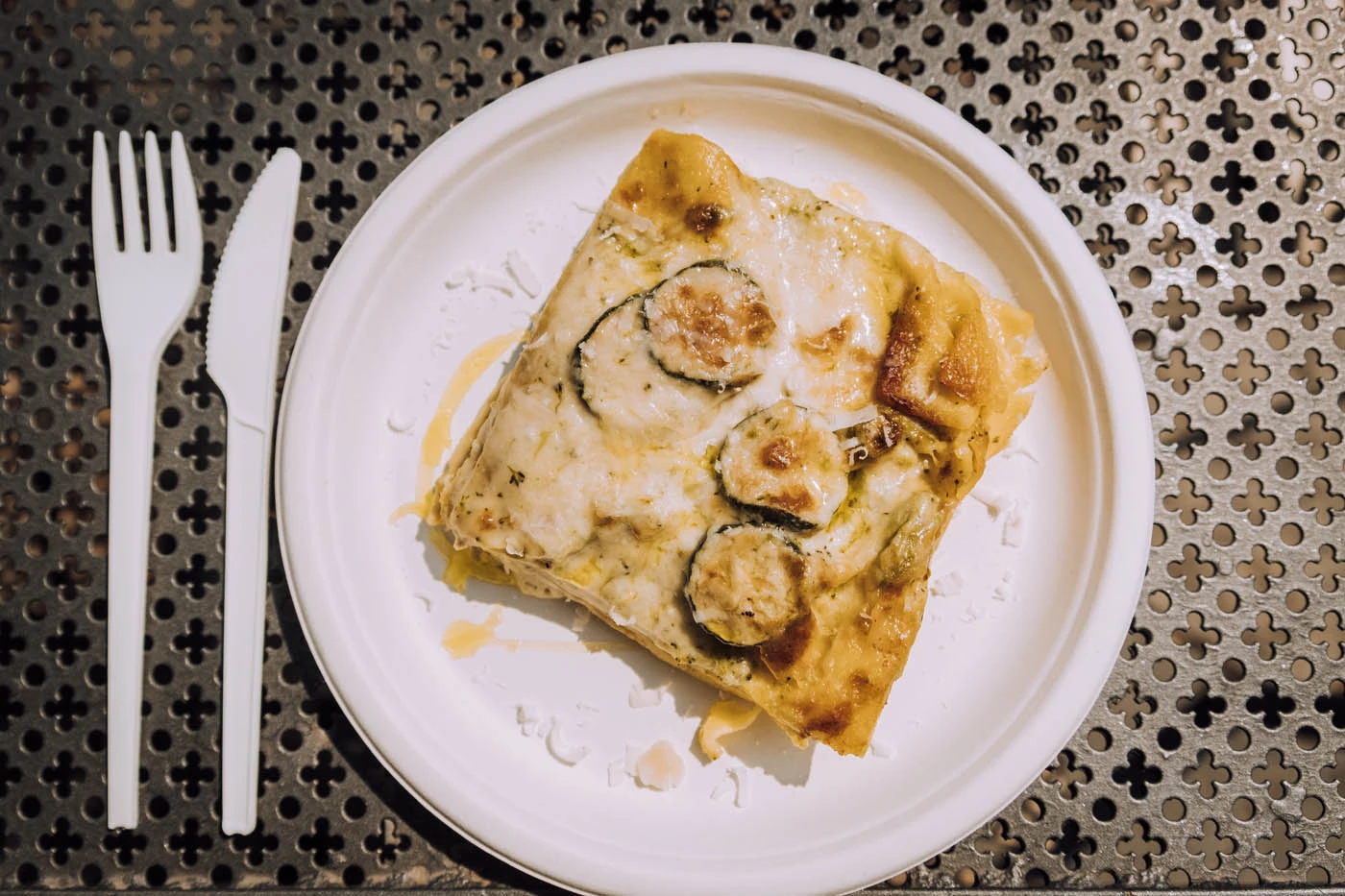
Vegetarian Lasagne with artichokes
Lasagne in Bologna is more than just a meal; it is a family institution! Each family’s unique recipe becomes a valued legacy handed down through generations, and no restaurant can rival Nonna’s house for the most delectable lasagna. These layers of pasta and sauce are like a comforting embrace for your taste buds, evoking warm memories. Whether you prefer it blanketed in rich ragù and béchamel or adorned with a delicate white sauce, one crucial principle remains: the pasta should be as light as a feather and hand-rolled with love.
The authentic Bolognese lasagna is made with spinach-based pasta. The most famous lasagnas in Italy and the world have their epicenter in Bologna. Though its modern form emerged during the Renaissance, a friendly rivalry between Bologna and Naples persists over its true origin. Despite the dispute, one thing is clear: Bologna is the beating heart of lasagna love!
Mortadella
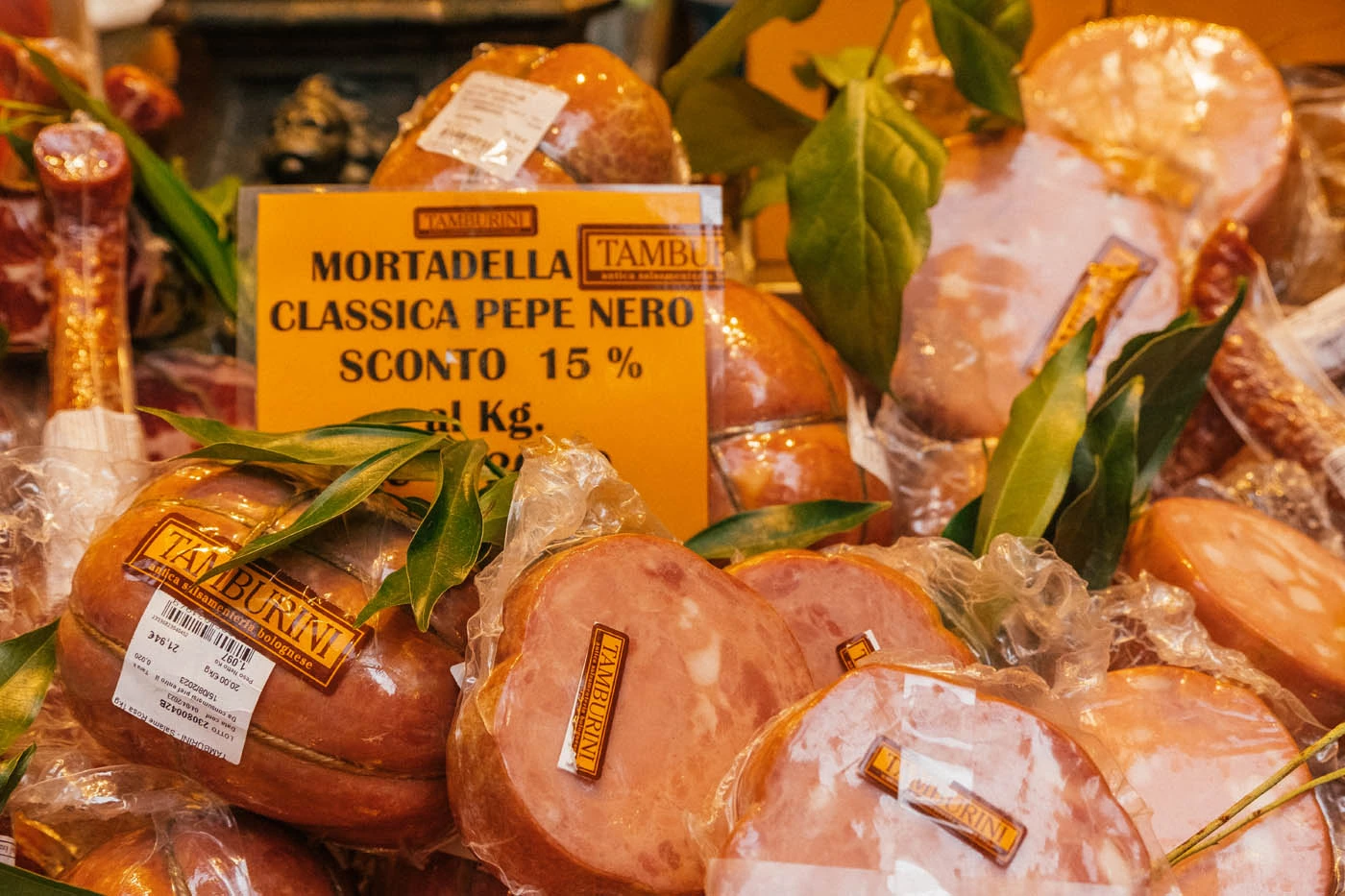
Mortadella is sometimes referred to as Bologna, but the latter term specifically refers to Mortadella di Bologna IGP, which is produced according to strict production specifications. Mortadella is incredibly versatile and can be used in various ways, such as in tortellini fillings, as an appetizer during aperitivo hour, or even as a topping in the form of a creamy mousse. While you are in Bologna, make sure to visit the Quadrilatero market, where you can purchase some bread and mortadella for the ultimate Bolognese merenda!
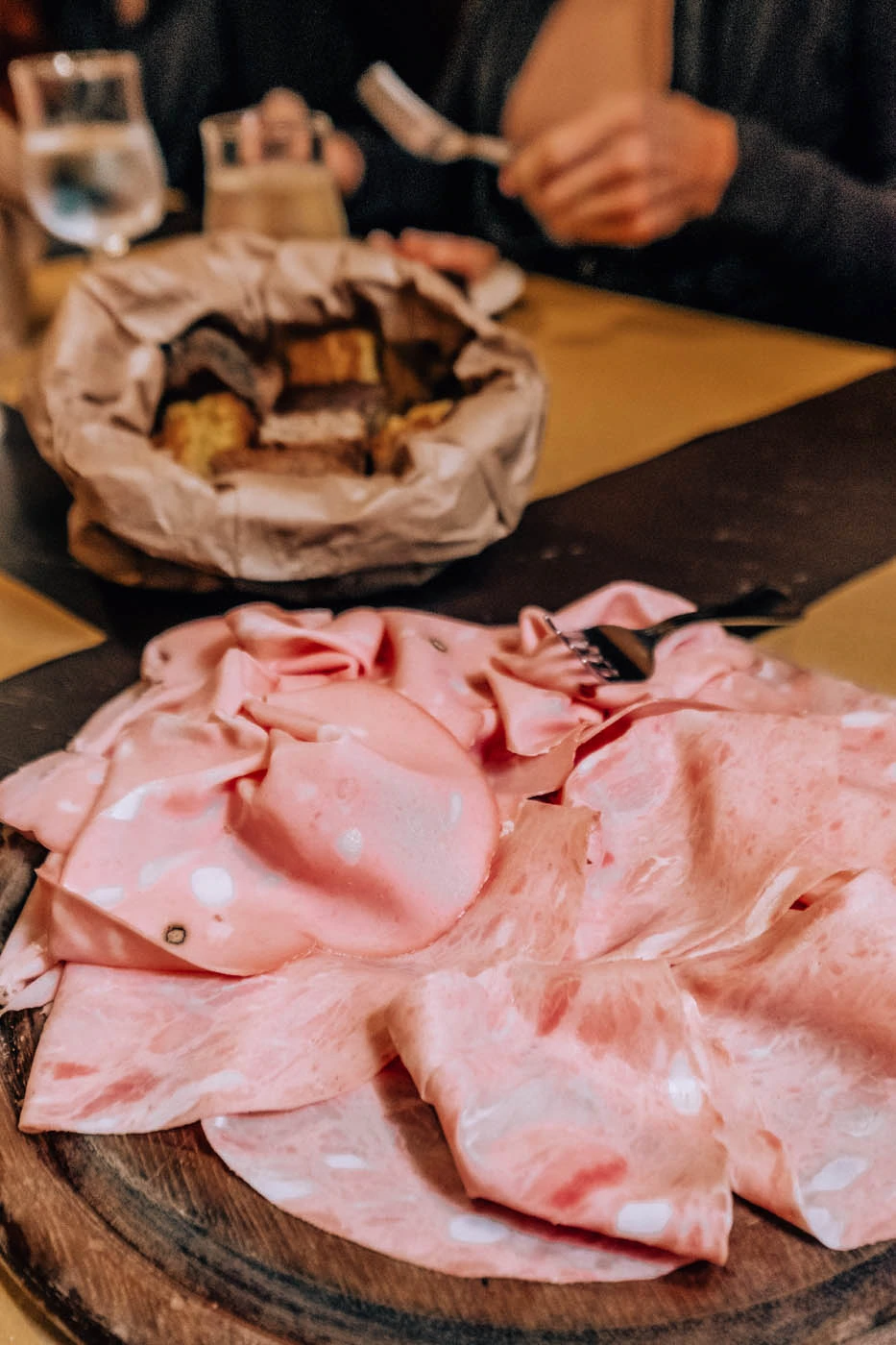
Mortadella (left) Salame Rosa (right)
Passatelli in brodo
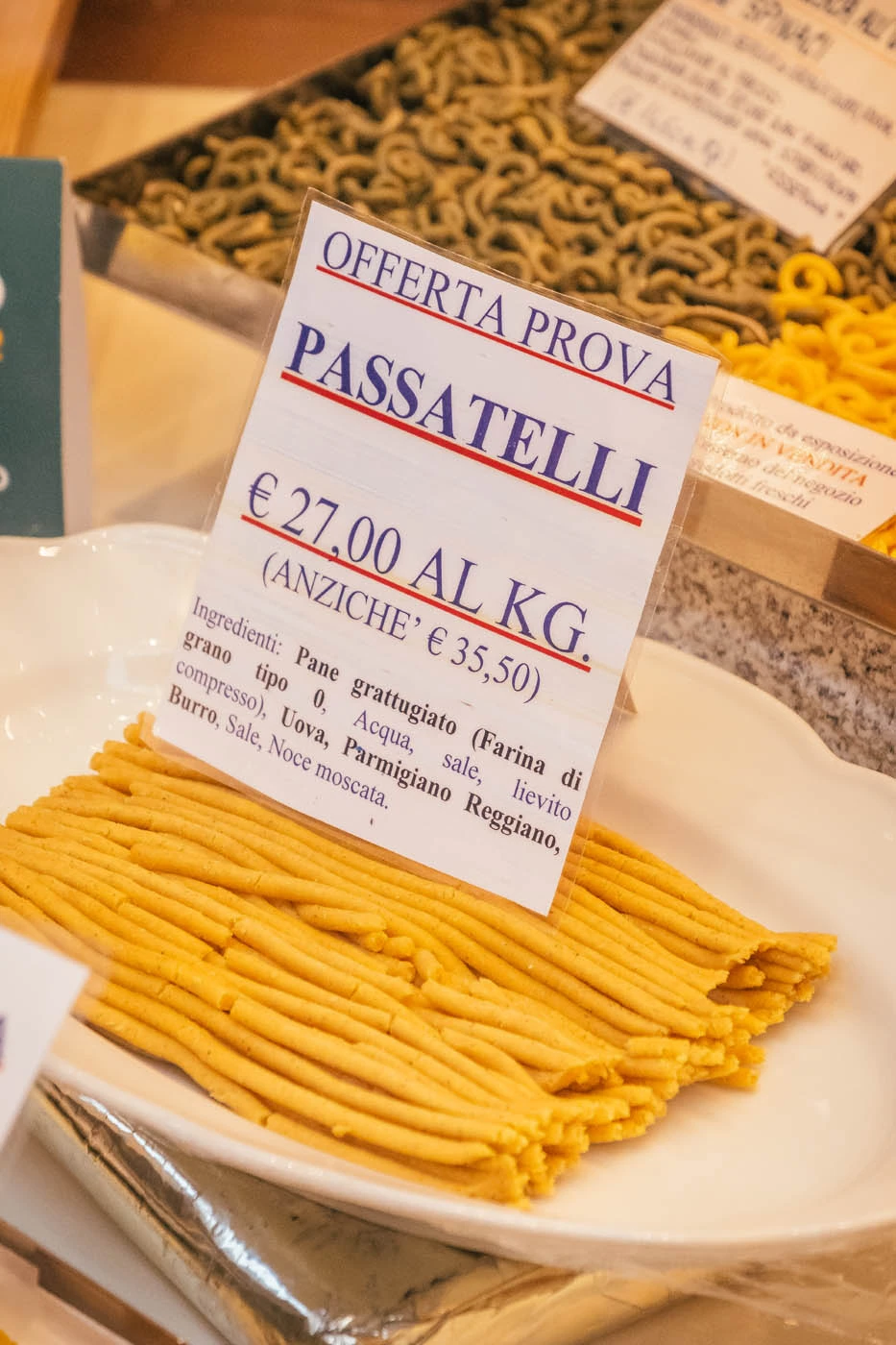
Passatelli were born as a humble peasant dish and likely originated from a home remedy called “tardura,” which combined eggs, cheese, and breadcrumbs and was reserved for women in the postpartum period. While Passatelli is traditionally served in broth, nowadays you can often find them also served dry throughout the year and seasoned with tomato sauce, truffle, and porcini mushrooms.
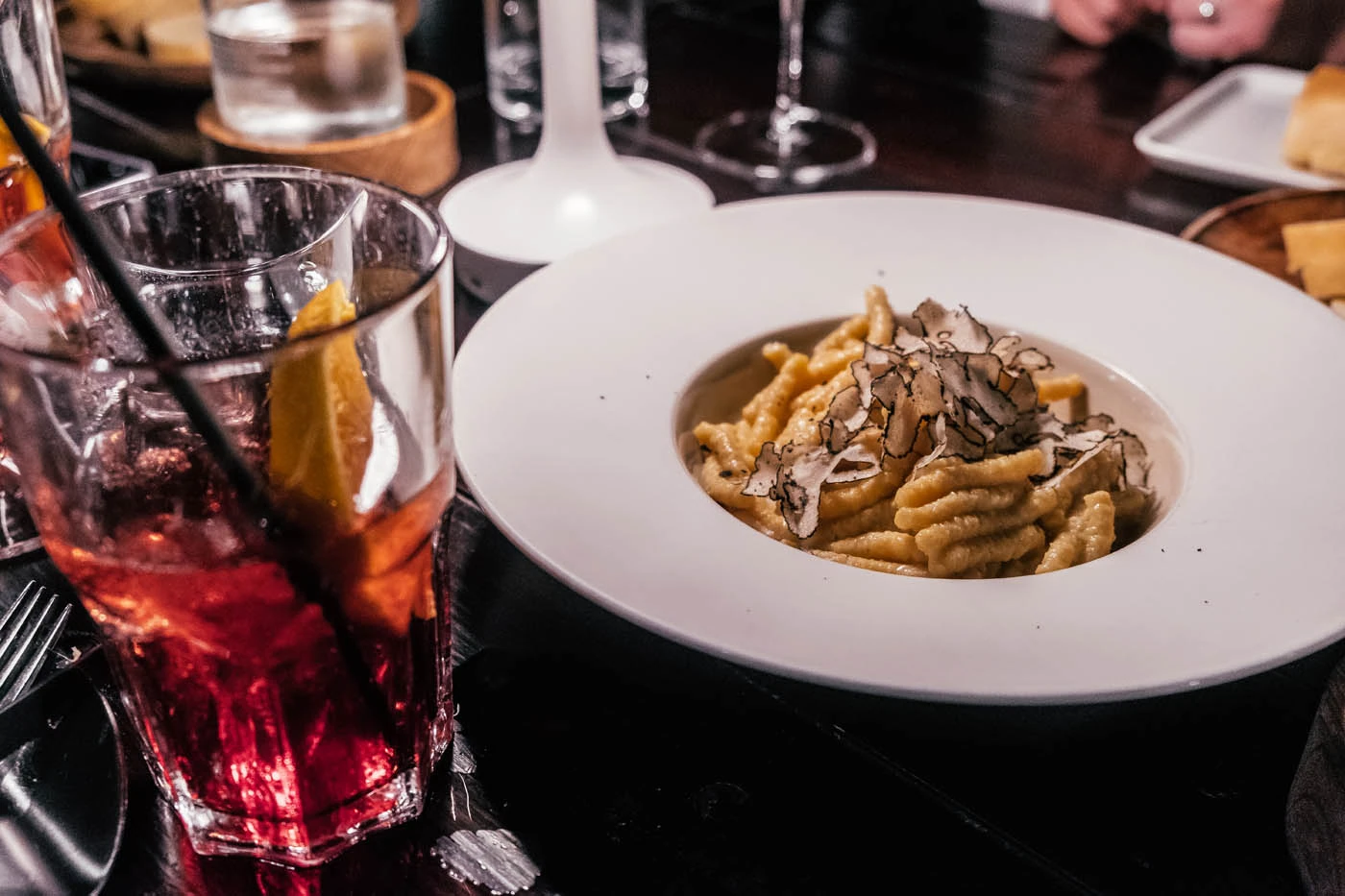
Passatelli with truffle
Cotoletta alla bolognese
You might think that the Milanese cotoletta has a monopoly on deliciousness, but Bologna offers its own delectable version: Cotoletta alla Bolognese! Also known as Petroniana in tribute to Bologna’s beloved patron saint, Petronius, this exquisite dish has existed since the 1600s, though the creator remains a mystery. And in 2004, the Italian Academy of Cuisine officially registered the recipe for cotoletta alla bolognese with Bologna’s Chamber of Commerce.
These divine veal rump slices are tenderized with love, coated in crispy breading, and pan-fried to golden perfection in a dollop of butter. Each piece is adorned with slices of prosciutto crudo ham and a hearty dusting of Parmesan cheese. The cooking process then continues by adding rich meat broth, which becomes a thick and tasty sauce.
Tigelle and Crescentine
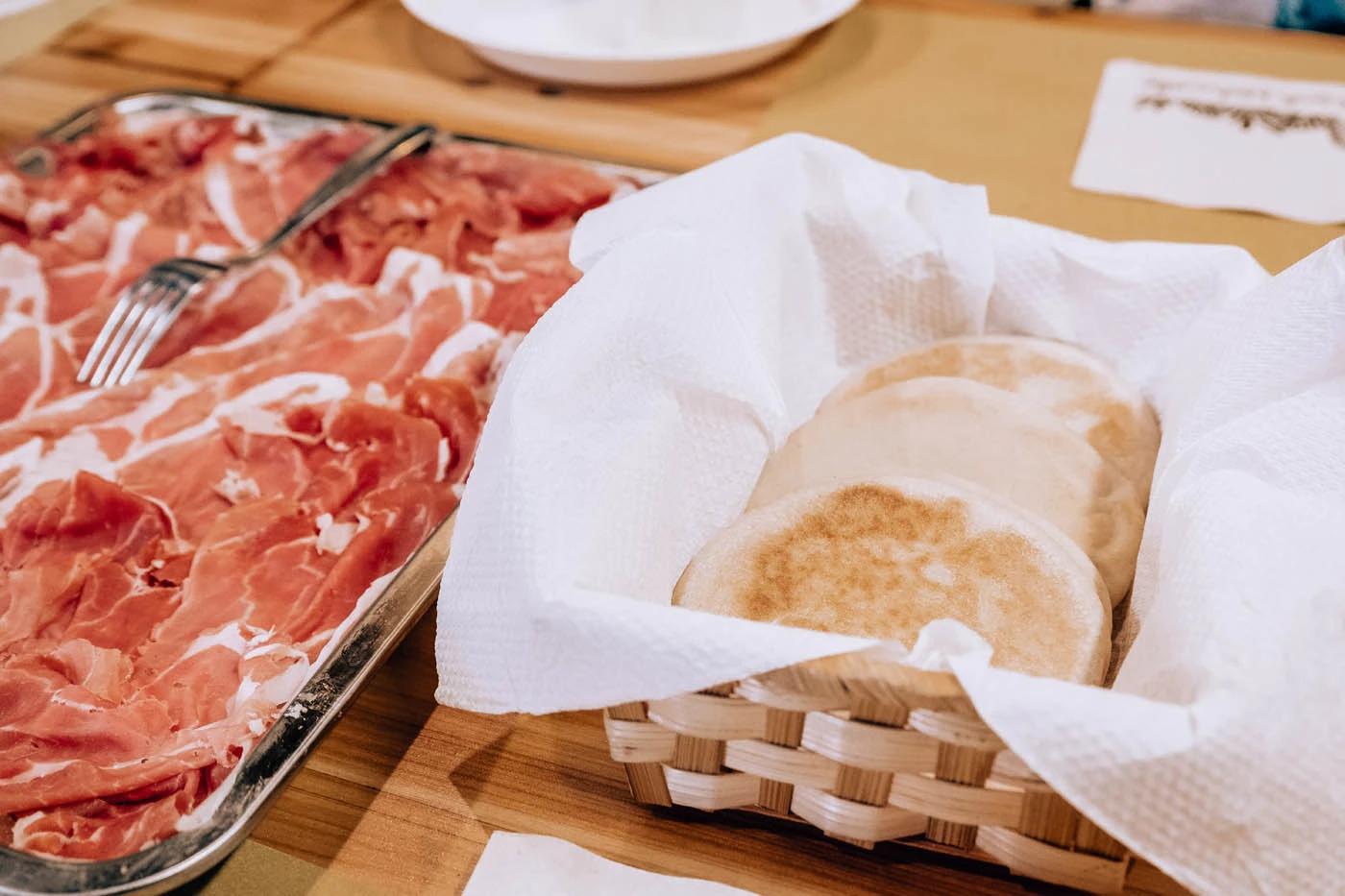
Tigelle
Tigelle and Crescentine are delicious Bolognese foods that are meant to be enjoyed in the company of good friends and conversation. Both are made with a simple dough of flour and water. The difference lies in the cooking process. While Tigelle are cooked in a cast iron mold known as a tigelliera (hence the name), Crescentine are deep fried and their name is a nod to their humble origins as a way to use what was left over (“cresceva” in Italian) from bread-making.
Once ready, they are typically cut in half and filled with delicious cured meats like lard, prosciutto ham and mortadella, as well as creamy cheeses like stracchino and crescenza. And if you have a sweet tooth, you simply must try them with Nutella. You can find Tigelle and Crescentine all over Bologna, but the best places to enjoy them are at local trattorias.
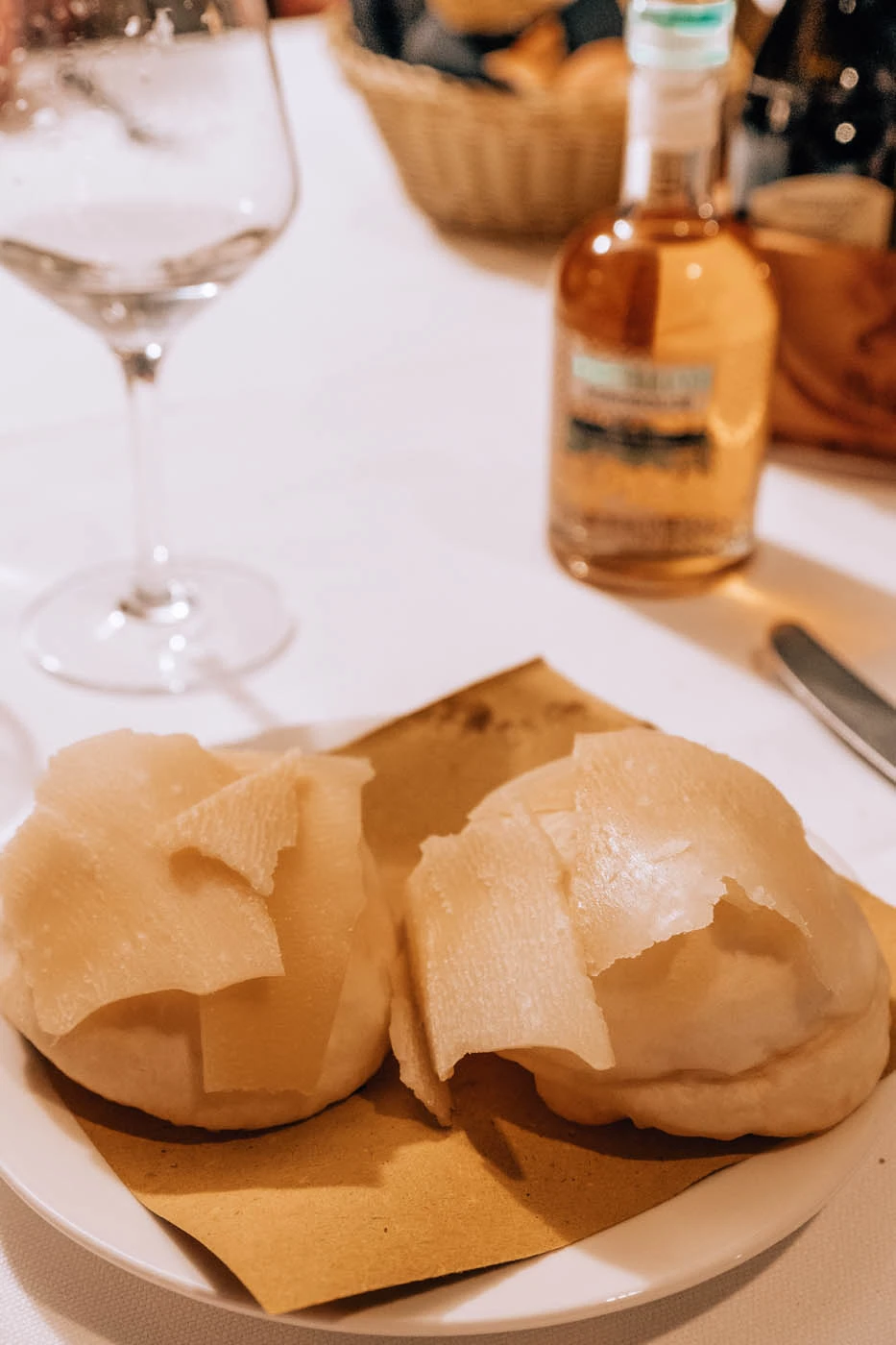
Crescentina (also called Gnocco fritto) with Parmigiano Reggiano
Torta di riso
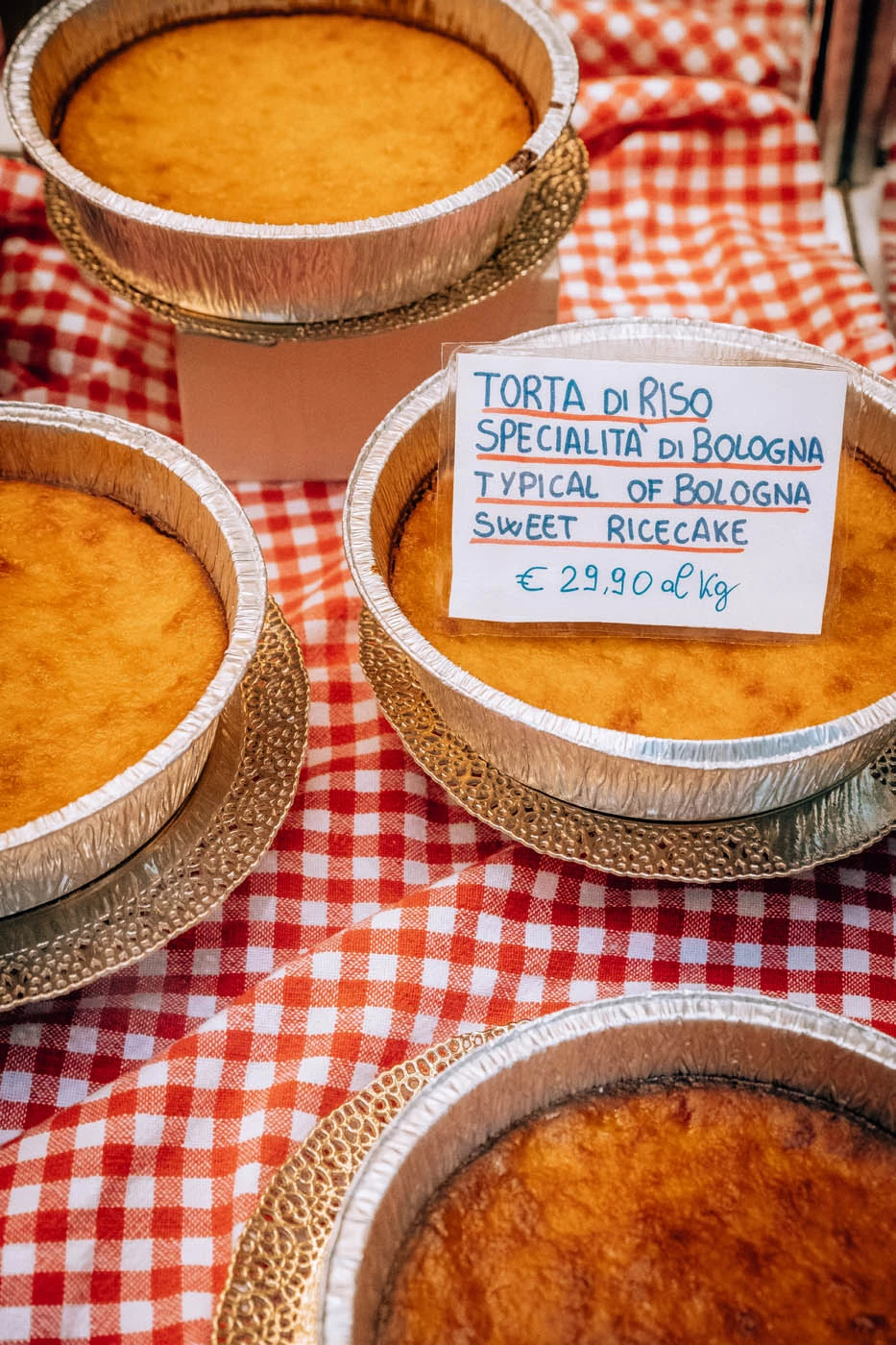
Originating in the early 15th century, this dessert was first created in Bologna during the Corpus Domini celebrations in late May, when vibrant fabrics adorned balconies and windows, and the dessert, sliced into diamond-shaped pieces, was shared among family and friends. As a result, Torta di Riso is also called “Torta degli addobbi”, meaning “cake of decorations.” Nowadays, you can easily find it in all of Bologna’s traditional bakeries.
Traditional Balsamic Vinegar
Aceto Balsamico, a culinary treasure from the Emilia Romagna region, is steeped in rich history and a painstakingly detailed production process. The two primary varieties – Aceto Balsamico di Modena IGP and Aceto Balsamico Tradizionale di Modena POD – adhere to strict regulations to preserve authenticity. IGP is crafted by blending wine vinegar aged for at least 10 years with carefully chosen grape musts from Modena and Reggio Emilia provinces and must be aged for no less than two months. In contrast, POD exclusively uses must from select grapes grown in Modena province, with a minimum aging period of 12 years. As a rule of thumb, the longer the aging, the finer the quality.
With roots dating back to ancient Rome, the term “balsamic” first appeared in the dukes of Este’s cellar inventory in 1747 and alluded to its medicinal qualities, as it was commonly used as a remedy at the time. The prestige of this exceptional condiment was further solidified after the establishment of the Kingdom of Italy, as it gained recognition at international exhibitions and became a sought-after delicacy around the globe. To delve deeper into the history of this product, visit a balsamic vinegar factory, or “acetaia”, such as the renowned Acetaia Giusti in Bologna.
Aceto Balsamico isn’t just for salads, Italians put it on Parmigiano Reggiano, gelato and even pasta! Trust me, it’s spectacular. Once you try it there’s no going back.
Parmigiano Reggiano
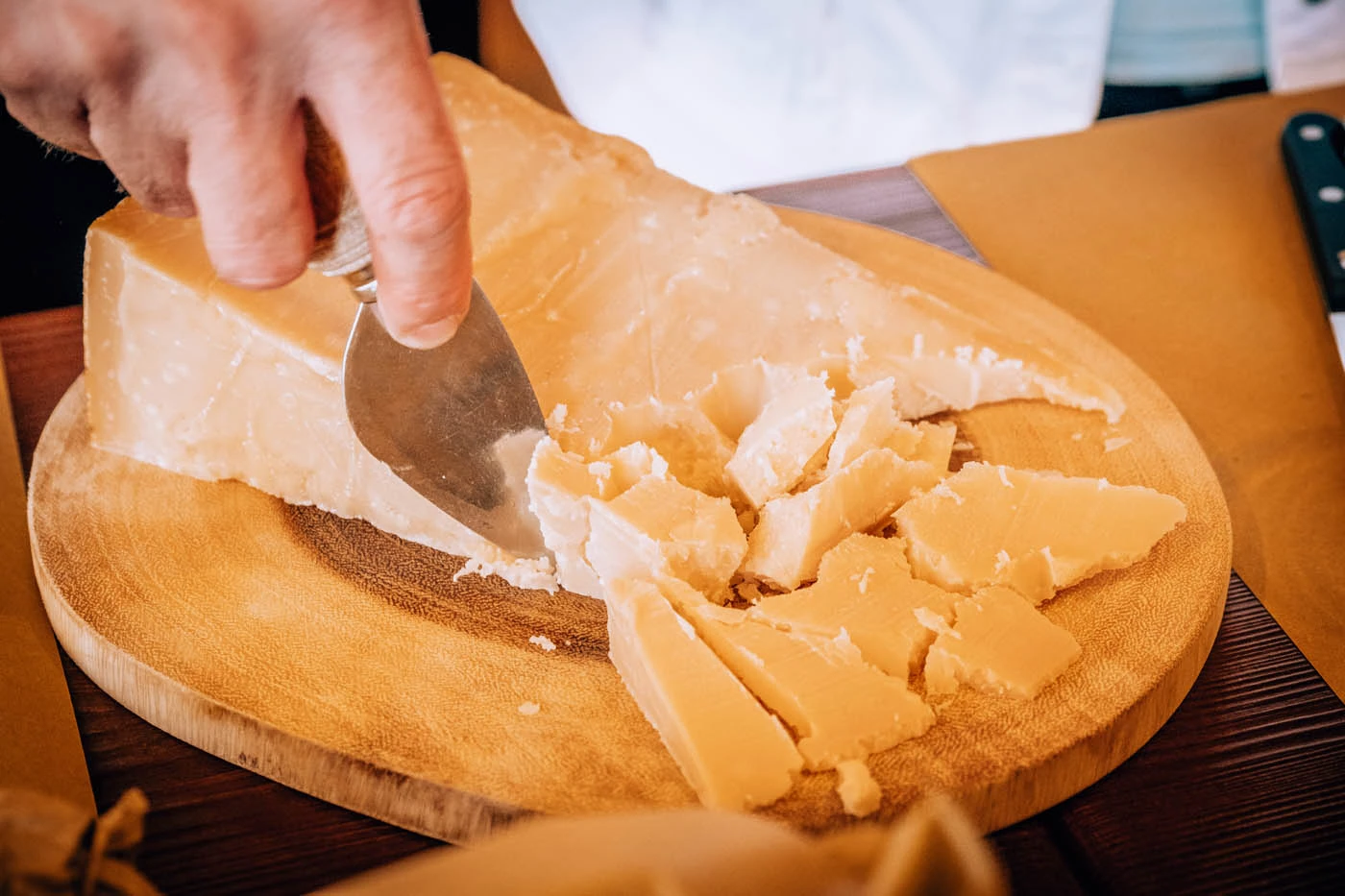
This cheese has a rich history dating back to the Middle Ages when the first dairy farms were created in the monasteries around the area, taking advantage of the abundance of watercourses and large pastures. Here’s a fun fact: Parmigiano Reggiano is so precious that it has its very own “cheese bank” in Italy! The regional bank Credito Emiliano (Credem) has been accepting wheels of Parmigiano Reggiano as collateral for loans since the 1950s. This bank has a special warehouse where the cheese is stored, and a dedicated team takes care of it from the moment it arrives until it’s returned to the farmer. So, next time you enjoy a bite of Parmigiano Reggiano, remember that it’s not just a culinary treasure but also a unique financial asset!
Prosciutto Crudo di Parma (Parma Ham)
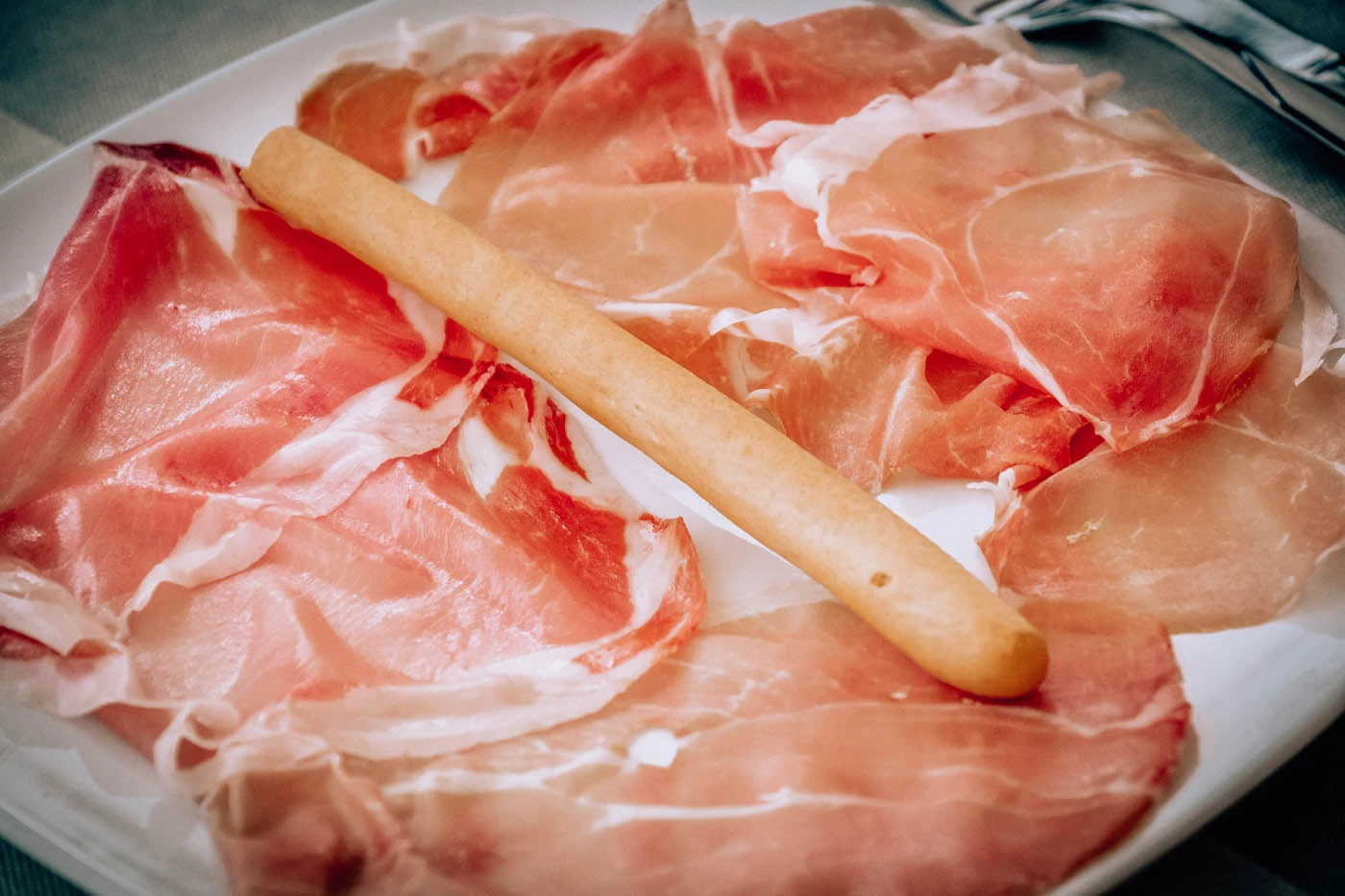
Prosciutto di Parma has roots in Roman times when Parma locals excelled at making salted hams from their large herds of pigs. But it wasn’t until the Prime Minister of the Duchy of Parma planned to construct two pig slaughterhouses that the Parma ham industry boomed. Since 1996, Prosciutto di Parma has obtained the Protected Designation of Origin (PDO) recognition and is controlled by a strict production specification, which is an absolute guarantee of quality. And every year in September, a festival is held in the province of Parma to celebrate Parma Ham.
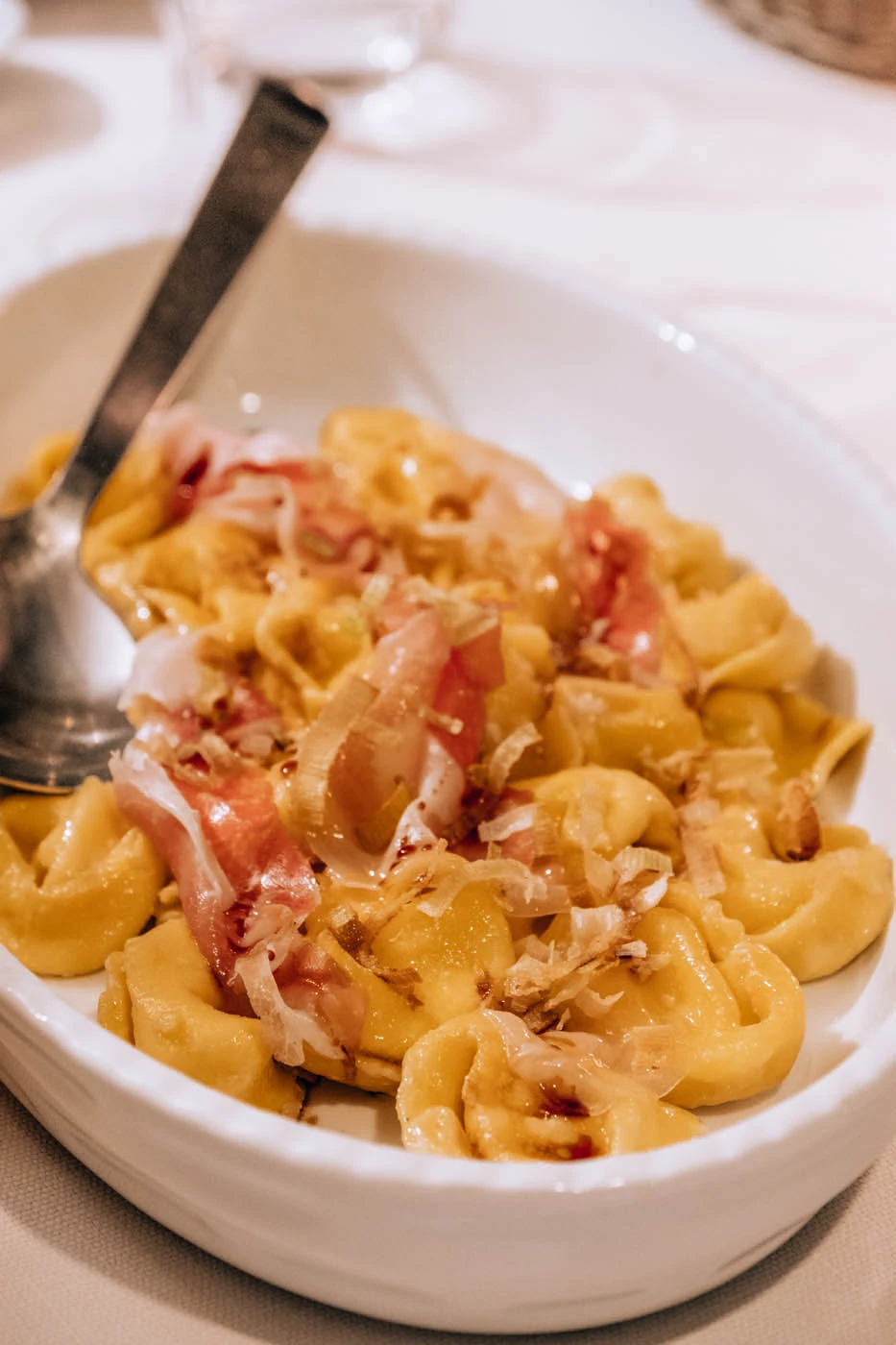
Tortellini with prosciutto di Parma
Gramigna con salsiccia
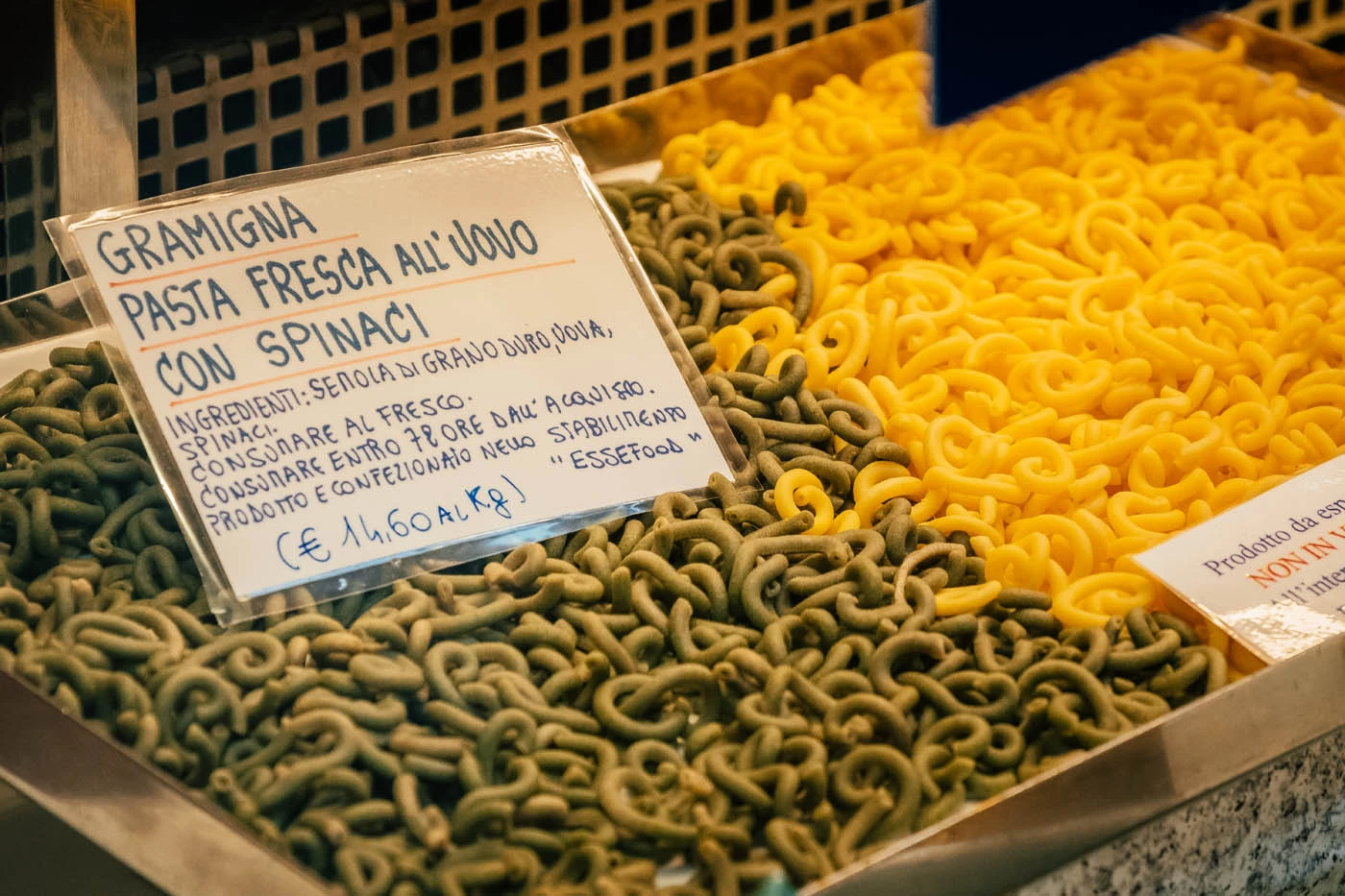
Traditionally, gramigna is accompanied by a rich sugo alla salsiccia, a sauce featuring sausage as its star ingredient. However, during the warm summer months, you can also enjoy it with a lighter, fragrant tomato sauce and fresh basil.
Friggione
The Bolognese friggione is a tasty dish rooted in rustic culinary traditions and prepared using basic ingredients like white onions and freshly peeled, diced tomatoes. These ingredients are slow-cooked together for an extended period. The recipe for friggione first appeared in 1886, as documented by the local Maria Manfredi Baschieri in her cookbook.
Friggione is delicious both when served hot during the colder months or chilled in the summertime. This versatile dish can be enjoyed in various ways: as an appetizer, paired with tigelle, or as a side dish. No matter how it’s served, the “scarpetta” (i.e., soaking up the remaining sauce with bread) is an essential and delightful part of the experience!
Pignoletto
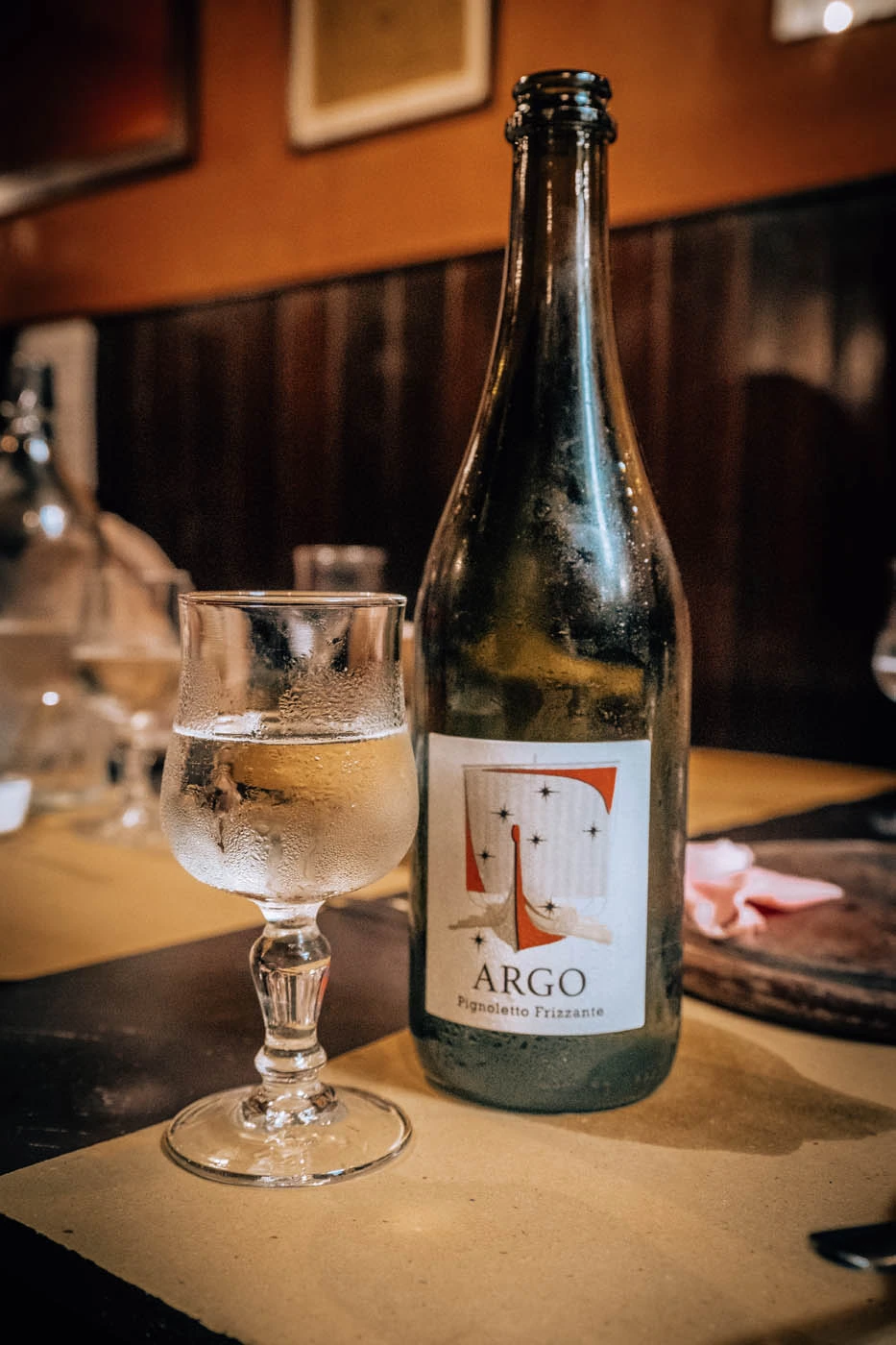
The Pignoletto vine has a rich history, with its roots reaching back to the days of ancient Romans. In his well-known work Naturalis Historia, it is believed that Pliny the Elder referred to this grape as Pino Lieto. However, he wasn’t particularly fond of the wine it produced, as it lacked the sweetness the Romans adored.
Top 5 restaurants in Bologna
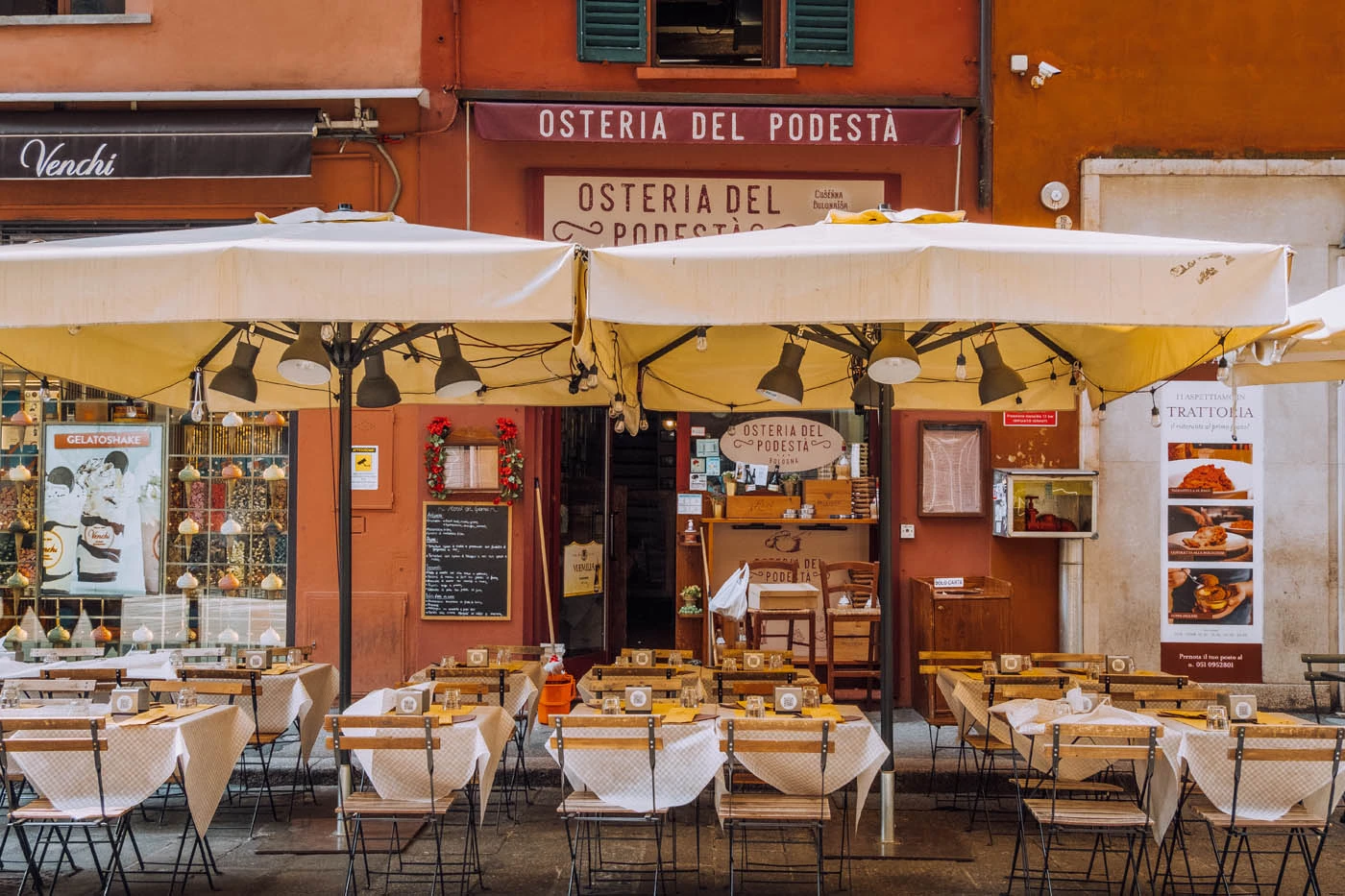
Antica Trattoria Gigina
In this trattoria, established in 1956, the aroma of freshly cooked traditional Italian dishes fills the air. The founder, Aldina Fava, affectionately known as Gigina, set the standard for the trattoria’s menu, which features delectable pasta dishes made from scratch, including Tortellini in broth, Lasagne, Tagliatelle, and Passatelli. Each dish is perfectly cooked, just as Gigina did, with fragrant ragù simmered for hours to achieve the perfect texture and flavor. To complement your meal, the trattoria boasts a well-stocked wine cellar with a variety of wines to suit every palate.
Address: Via Stendhal 1, Bologna – website
Sfoglia Rina
Within a 5-minute stroll from Piazza Maggiore, Sfoglia Rina started as a humble pasta shop over half a century ago and has now blossomed into a delightful restaurant specializing in exquisite handmade pasta. The menu features tempting Bolognese classics such as tortellini in a steaming broth, hearty gramigna with sausage sauce, and baskets of tigelle accompanied by an assortment of cheeses and cold cuts. They also offer weekly seasonal specials. The dining space has a cozy and welcoming atmosphere that makes you feel like you are in a warm home kitchen rather than a restaurant.
Address: Via Castiglione 5/B, Bologna – website
Polpette e Crescentine
This restaurant, located within the Mercato delle Erbe, is known for dishing out some of the best Tigelle and Crescentine in Bologna, served with an array of delectable cured meats, cheeses, and creamy mortadella mousse. As the name hints, they’re also specialized in meatballs, but their menu covers all local favorites, from Tagliatelle al Ragù Bolognese to Friggione and Torta di Riso. As for the wine selection, they have a great list of regional wines, mainly sourced from the hills surrounding Bologna.
Address: Via San Gervasio 3/c, Bologna – website
Osteria del Sole
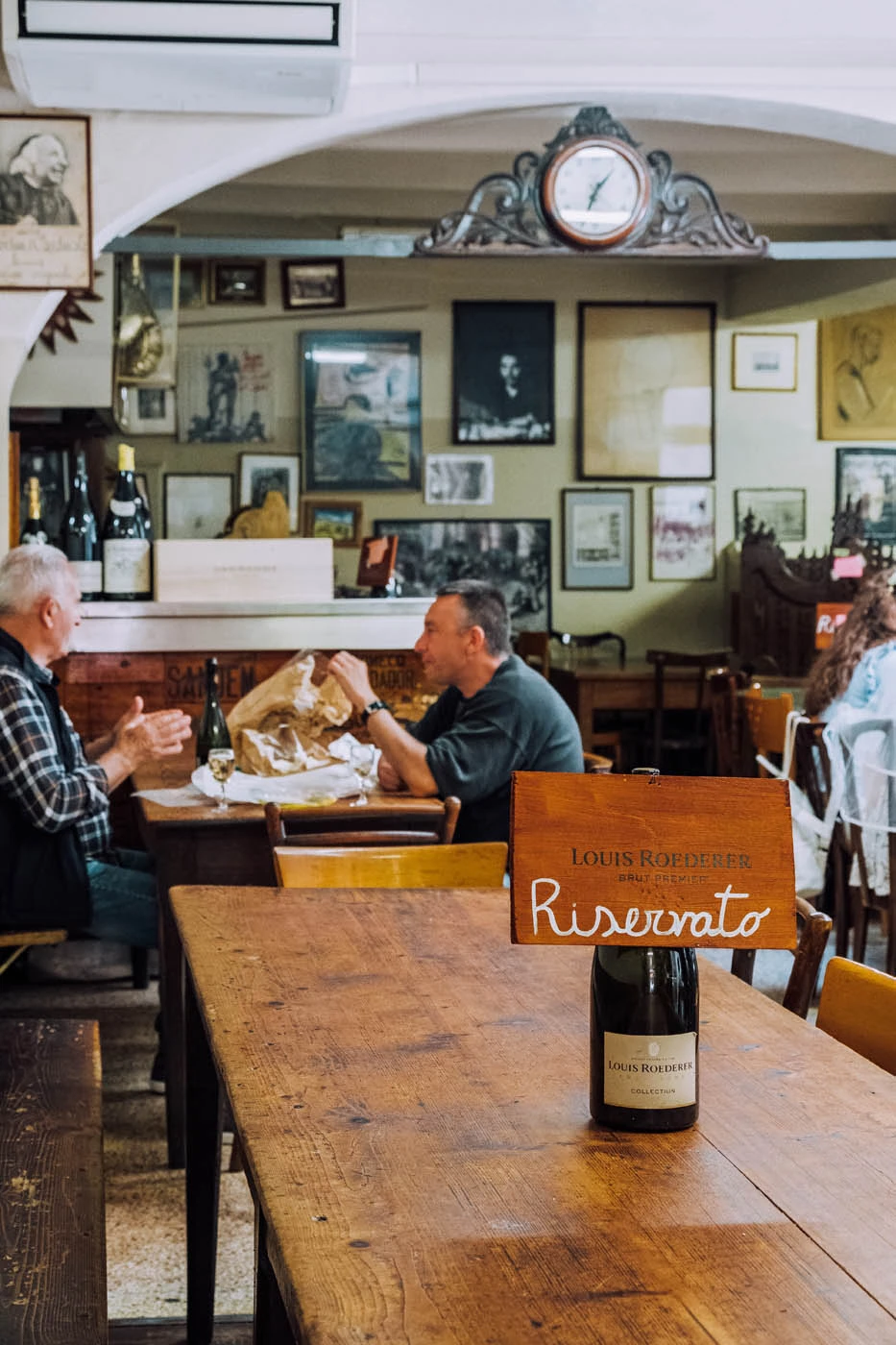
Address: Vicolo dei Ranocchi 1/D, Bologna – website
All’Osteria Bottega
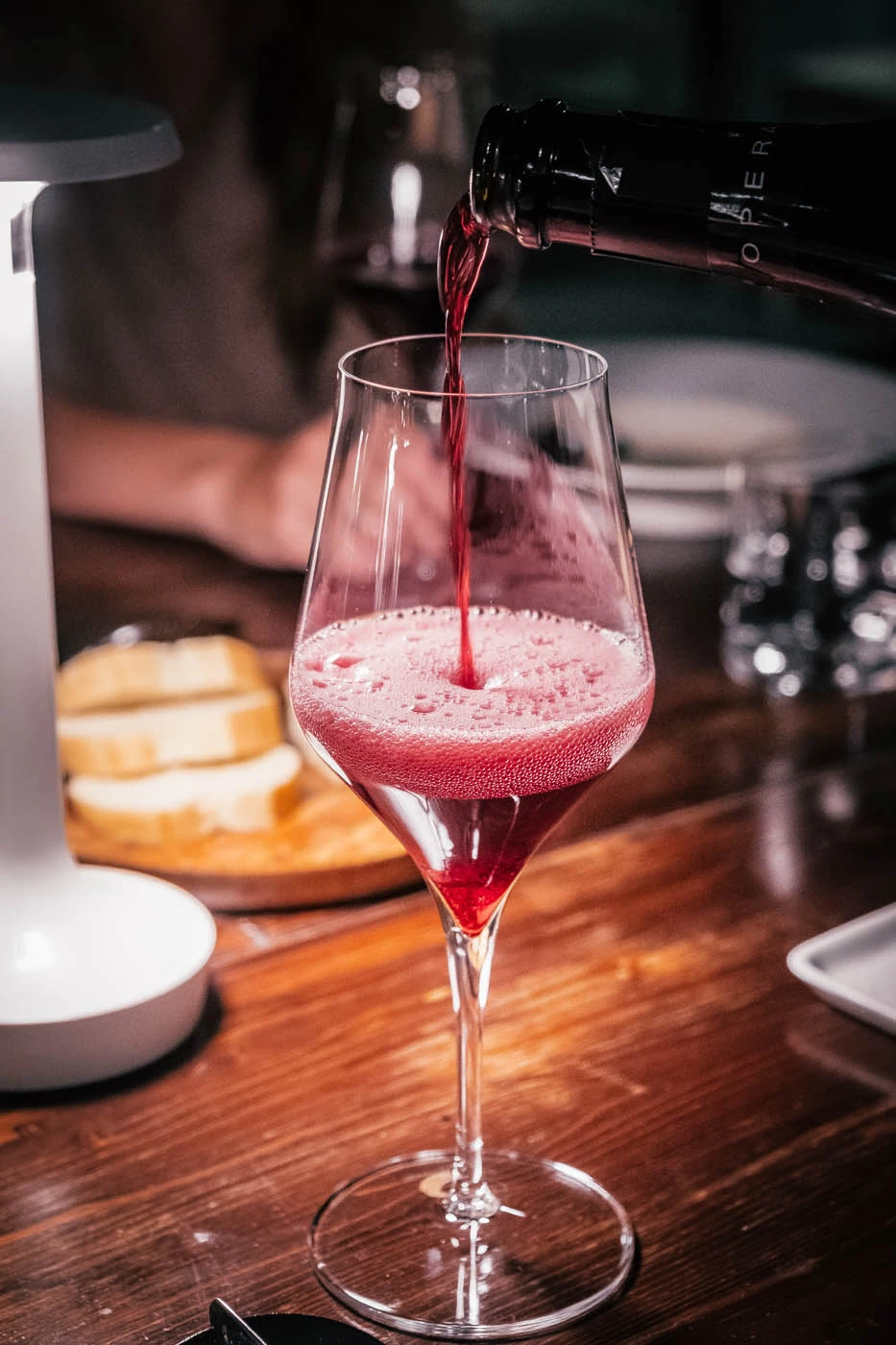
Lambrusco
Nestled away on a quiet, semi-secluded street, All’Osteria Bottega offers a genuinely authentic gourmet dining experience. Their menu is a culinary journey through the flavors of traditional Bolognese cuisine, with an array of homemade, fresh pasta, local cold cuts, cheeses, savory meats, and delectable homemade desserts. The wine list features excellent Sangiovese and Lambrusco, as well as national and international favorites. To avoid missing out, be sure to make a reservation in advance.
Address: Via Santa Caterina 51, Bologna – website
For an authentic food tour of Bologna and beyond, don’t miss this small multi-day group trip around Emilia-Romagna that includes tastings, factory tours and private pasta-making classes.
Don’t be treated like a tourist. Learn Italian with my 80/20 method
Travelling to Italy? Don’t be treated like a tourist! Live your best travel experiences and learn Italian for less than the cost of eating at a tourist trap restaurant or a taxi driver who has “taken you for a ride”. I’ve made it easy for you to master the Italian language so you can create lifelong memories as you mingle with locals, get local tips, avoid tourist traps, and make new friends. Who knows, you might even be invited over for afternoon tea by a lovely Sicilian family like I was! Read all about how speaking Italian changed my life and check out my online Italian video course here.
Here’s what my students are saying:
I really enjoyed the Intrepid Italian course, it certainly exceeded my expectations. The learning methodology is great, and easy to follow and found that I progressed much faster in the last 4 weeks than I ever did on my own or using other language apps. Grazie mille Michele, I can’t wait until I can put my new skills into action! – Roma Small
Join now and learn anywhere, anytime
Planning a trip and need travel insurance? Get a free quote from World Nomads here.
Don’t miss these guides to Bologna and Emilia-Romagna
- 55 UNIQUE & BEST Things to Do in Bologna, Italy + Top Tours
- What to Do in Bologna in a Day (The PERFECT Bologna Day Trip Itinerary)
- Where to Stay in Bologna: Best Hotels & Apartments By Neighbourhoods
- The BEST EMILIA ROMAGNA Food Tour // Tastings, Cooking Classes & Factory Tours
- 31 BEST Things to do in Parma, Italy
- 15 BEST Hotels in Parma, Italy // Where to Stay in Parma for Every Budget
Like it? Pin it for later!
Over to you!
Did you enjoy this guide? Let me know using the comments section below or join me on social media to start a conversation.
Thanks for reading and I hope you enjoyed this post.
Like what you see? Subscribe using the form below to have all of my posts delivered directly to your email.

